Unnamed monsters – A Quiet Place
2018 horror A Quiet Place features monsters which, though blind, have unusually acute hearing. As scary as these beasts are in concept alone, they’re even creepier to look at. Though the film smartly keeps them off-camera for much of the running time, they're by no means a disappointment when they finally appear.
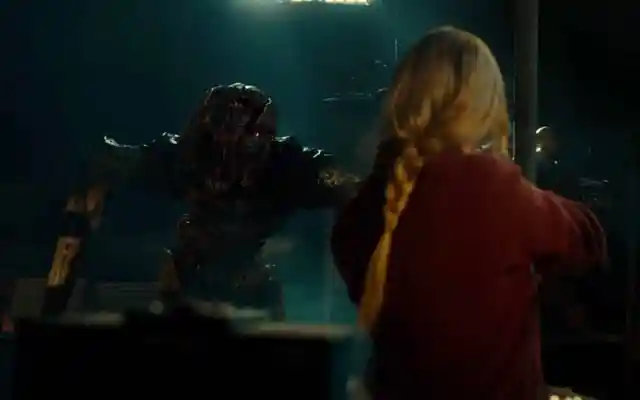
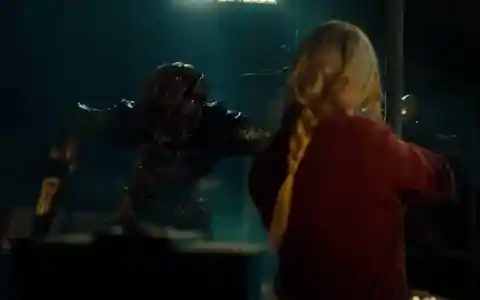
As reported in Vanity Fair in 2018, the SFX team on director John Krasinski's film drew on “prehistoric fish, black snakes, and bats,” plus “bog people: cadavers that have been mummified in peat.” Small wonder the end results are so creepy.
Dementors – Harry Potter series
The Dementors, the black-cloaked wraiths that guard Azkaban prison, are surely the creepiest creations of the Harry Potter series. While similar to the Ring Wraiths of The Lord of the Rings, they're made even eerier by the way they float, not to mention the fact that they literally suck the joy out of their victims.
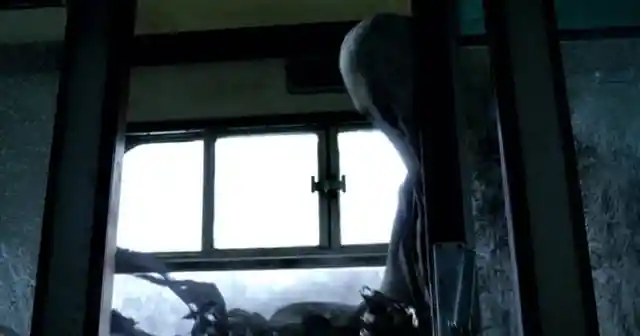
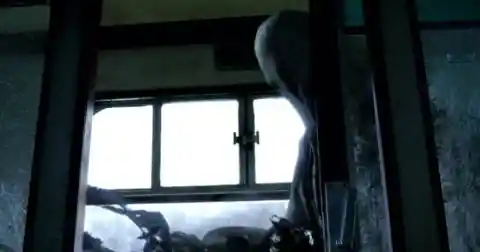
For their first appearance in Harry Potter and the Prisoner of Azkaban, director Alfonso Cuarón was originally keen to bring them to life exclusive via puppetry. However, this proved too costly and CGI was used instead. However, puppets were used as reference for the CG artists.
Davy Jones – Pirates of the Caribbean
Pirates of the Caribbean villain Davy Jones is portrayed by actor Bill Nighy, but the character’s facial effects are created almost completely from CGI. The British actor and his fellow sub-aquatic pirate cast mates wore dots on their faces and gray, pyjama-like suits on set as guidelines for the digital artists.
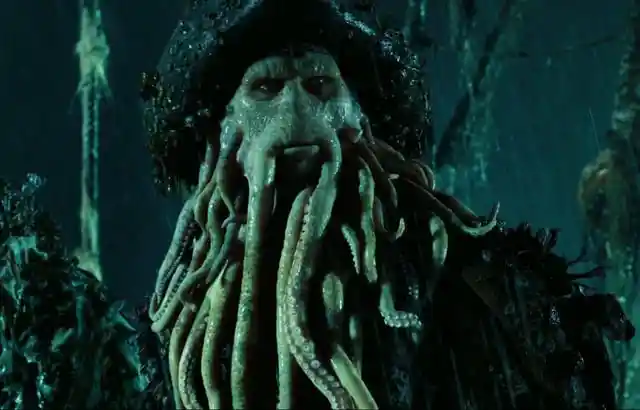
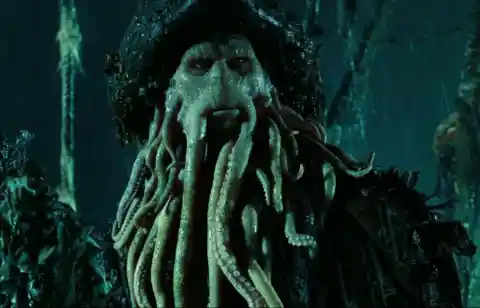
Nighy wore a prosthetic only once, when Orlando Bloom’s Will Turner steals a key from within his tentacle beard. The success of this CGI surprised even the filmmakers, who filmed extra shots using traditional make-up which they ultimately didn’t need.
The dinosaurs – Jurassic Park
1993’s classic monster movie Jurassic Park was produced in a time when CGI was still in its infancy, yet the film’s digital effects (used seamlessly in conjunction with old-school practical effects and animatronics) remain extraordinarily realistic today, more than 30 years on.
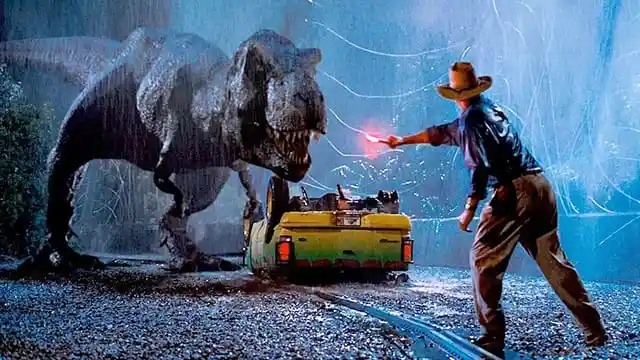
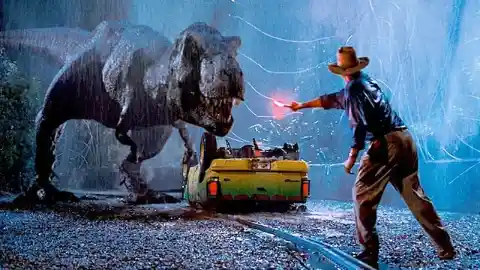
All the digital dinosaurs in Steven Spielberg's blockbuster are impressive, but none inspire such awe as the terrifying Tyrannosaurus Rex. For every frame of the T-Rex in the rain, the effects took six hours to render – and, if you recall, there’s a lot of rain in that pivotal scene.
Gollum – The Lord of the Rings: The Two Towers
Is Gollum a monster or a man? Either way, the character as presented in Peter Jackson’s movies is a technical marvel. Gollum’s arrival in The Two Towers marked a watershed moment for the blending of CGI and live-action footage: though animated, he is performed by actor Andy Serkis.
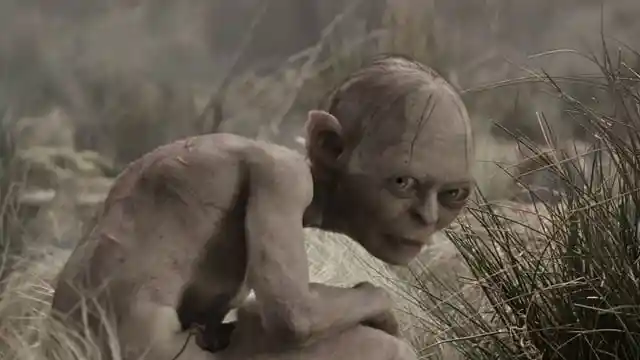
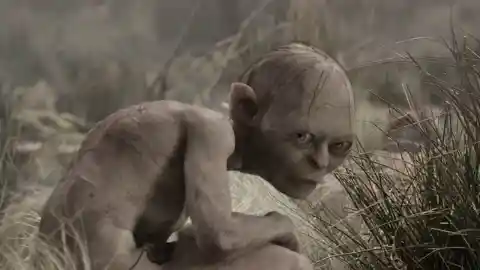
FX company Weta Digital began animating Gollum back in 1998 four years before second film The Lord of the Rings: The Two Towers opened. Many called for Andy Serkis to receive a Best Supporting Actor Oscar nomination for his work, but Hollywood couldn't yet accept that an animated character could be considered a 'real' performance.
‘Clover’ – Cloverfield
While never given in a name in the film, the giant monster of 2008 found footage horror Cloverfield was affectionately nicknamed Clover by production staff. Director Matt Reeves gives us only teasing glimpses of the creature for a while, but we see it very clearly before the film's end.
25 storeys tall and brimming with teeth and bug eyes, you might be surprised to learn that Clover is intended as an infant of its species. A considerably larger version is glimpsed in 2018's sequel The Cloverfield Paradox (unfortunately a much weaker film than either Cloverfield or second film 10 Cloverfield Lane).
The Homunculi – Don’t Be Afraid of the Dark
2010’s Don’t Be Afraid of the Dark is a remake of a 1973 TV movie. Produced by horror icon Guillermo del Toro and directed by Troy Nixey (his sole feature effort to date), the film didn’t prove a big hit, but CGI beasties the Homunculi deserve appreciation.
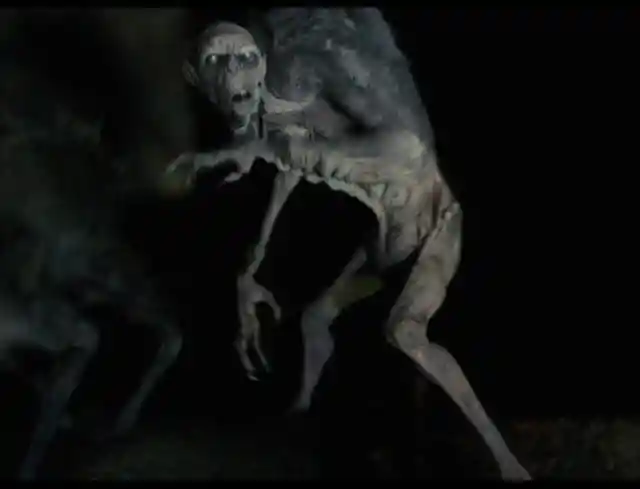
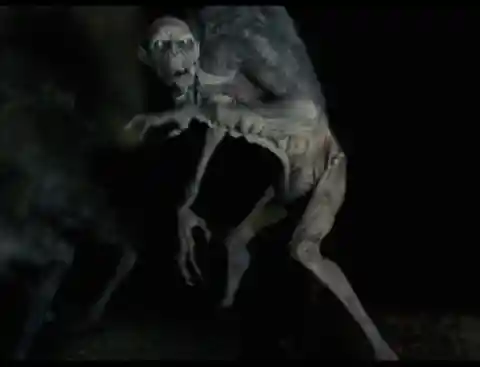
Inspired by mole rats, the creatures - an ultra-creepy twist on tooth fairies - are almost completely blind and hairy in all the wrong places. These monsters, the film tells us, drag human beings into their ashy pit and make them into monsters themselves. Yikes.
Kong – King Kong (2005)
When Peter Jackson remade King Kong in 2005, many complained it was overlong and overblown, but few could fault the SFX. It was the first entirely digital take on the mighty ape, once again portrayed by Lord of the Rings actor Andy Serkis via motion capture technology.
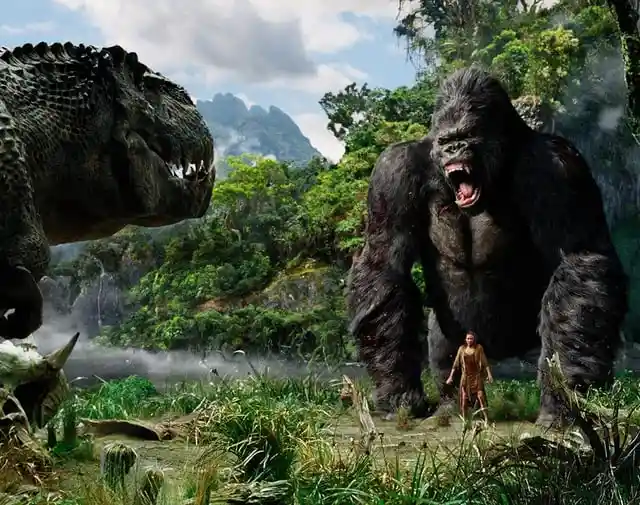
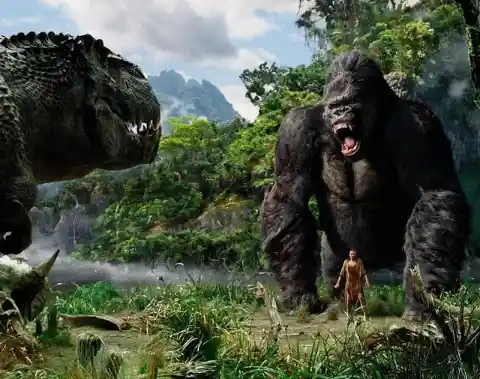
The frightening but also sympathetic monster truly feels alive at times, thanks both to Serkis' excellent performance and the exemplary work of the digital artists at Peter Jackson's FX house Weta. The film’s other creatures, including dinosaurs and various oversized creepy crawlies, are remarkable too.
Arachnids – Starship Troopers
Though it divided critics on release, director Paul Verhoeven's 1997 sci-fi action epic Starship Troopers (loosely based on Robert Heinlein's novel) was nominated for Best Visual Effects at the Oscars. This was deserved, as it boasts some of the most remarkable CGI monsters of the era.
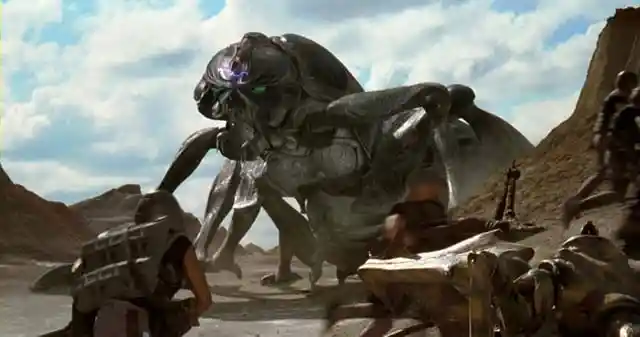
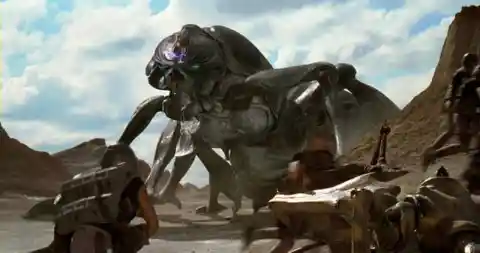
Variously known as Arachnids or simply Bugs, the film’s antagonists are giant, inarticulate insects from space. Most of these are comparatively small soldier bugs with sharp limbs, but there are also some that are considerably larger, and look more like giant militarized cockroaches.
The bear – Annihilation
Directed by Alex Garland with a cast including Natalie Portman and Tessa Thompson, 2018’s Annihilation is one of the most abstract and genuinely nightmarish science fiction films in recent memory. It also boasts a wonderfully monstrous CGI creation: a monstrous bear.
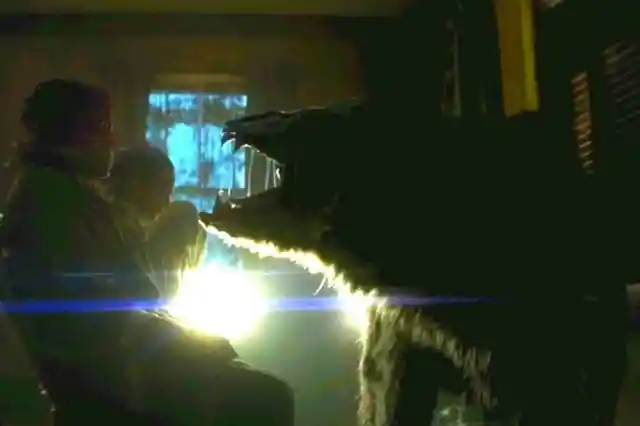
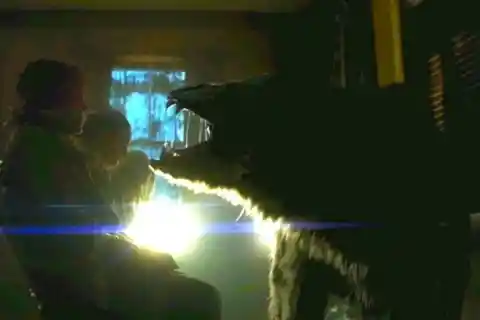
The terrifying, mutated bear-like creature is only seen in brief glimpses, which serves to make it all the scarier. The film’s FX artists brought to life by literally merging a scan of a bear skull with that of a human skull.
Edgar the Bug (Men in Black)
1997’s Men in Black has no shortage of alien creations merging CGI. However, the most impressive of the lot has to be the film’s main villain, Edgar, played in his initial human form by Vincent D’Onofrio, but revealed as a mighty bug in the final scenes.
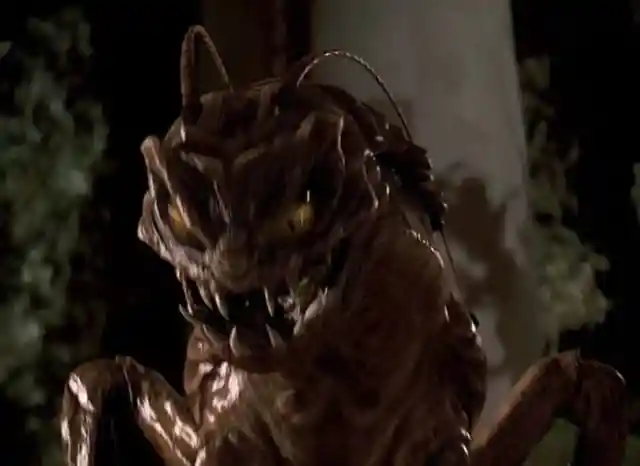
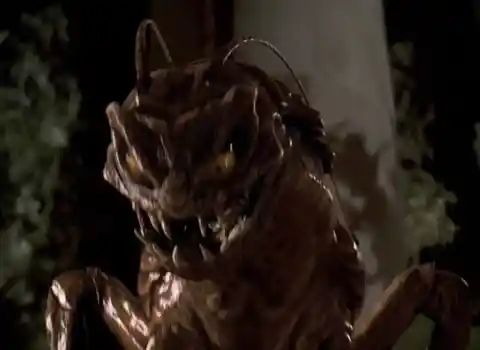
The level of CGI required meant the final showdown with Edgar cost the filmmakers $4.5 million. Still, the success of the film's FX hinges on its balance of CGI with old school practical FX from special makeup master Rick Baker, who won an Oscar for his work on the film.
The Behemoth – The Mist
2007 Stephen King adaptation The Mist sees a small town swept up in a mysterious mist filled with monsters. The film’s many pterodactyl and praying mantis-like creatures are scary in their own right, but the most alarming of the lot is the one known as the Behemoth.
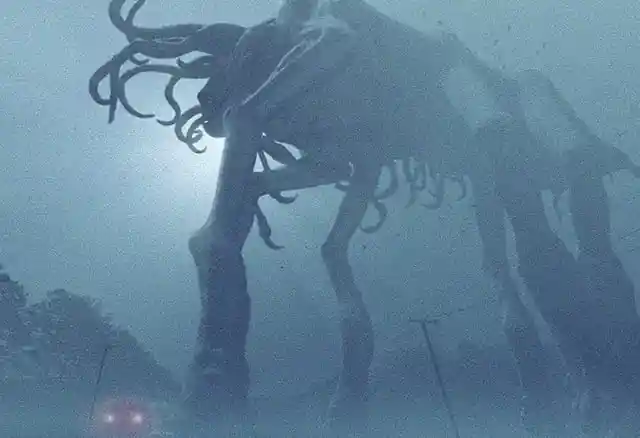
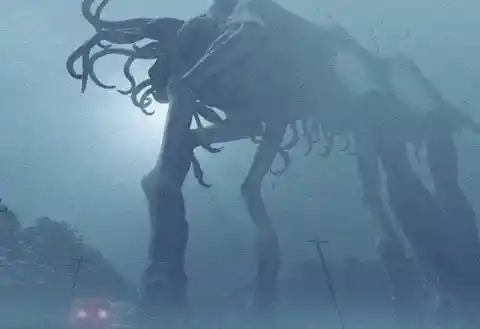
As the nickname might suggest, it’s an absolutely gargantuan terror, boasting six legs and tentacles for a face. Artists Jordu Schell, Bernie Wrightson and Greg Nicotero helped design the film's scary creations, brought to life by digital FX house CaféFX.
Dormammu – Doctor Strange
Marvel are big on top-of-the-line CGI, so it makes sense that 2016’s Doctor Strange boasts a suitably epic big bad in Dormammu, a gargantuan, almost god-like cosmic being – portrayed by Stephen Strange actor Benedict Cumberbatch himself, via motion capture technology.
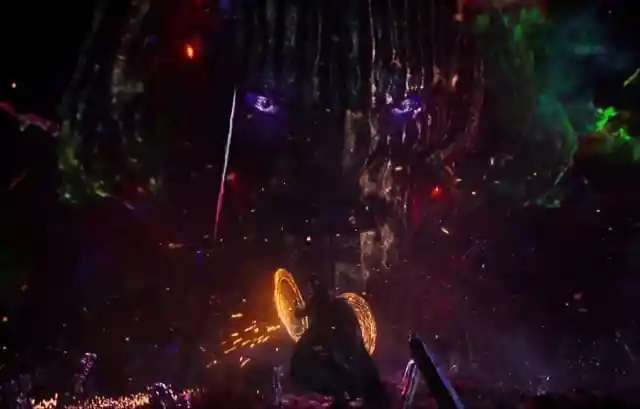
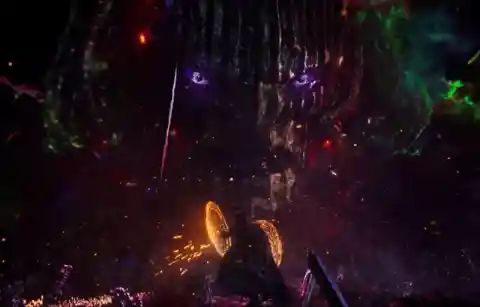
Some fans might have complained this wasn’t accurate to the comics (in which Dormammu is the size of a standard man), but most just enjoyed the spectacle of that massive face with purple eyes bursting forth from the very cosmos itself.
Prawns – District 9
Director Neill Blomkamp’s use of CGI has always been on-point, as proved by the FX artist-turned-director’s first feature film, District 9. This 2009 sci-fi drama presented some of the most astonishingly realistic CGI aliens ever seen on film, all of which are 100% digital creations.
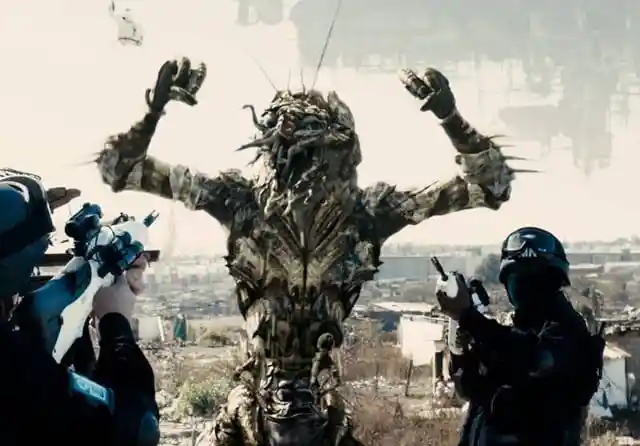
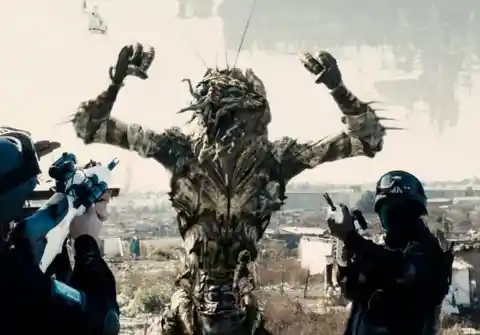
This achievement was made all the more jaw-dropping considering the film cost only $30 million to make, and was released to theaters around the same time as the considerably more expensive Avatar. However, Avatar wound up winning that year's Best Visual Effects Oscar, which some considered an injustice.
Non-Terrestrial Intelligence – The Abyss
Writer-director James Cameron has always been at the front lines of the CGI boom. The technology broke through in a big way thanks to Cameron’s 1989 movie The Abyss, whose Oscar-winning SFX team presented the most impressive digital creation ever put on film up to that point.
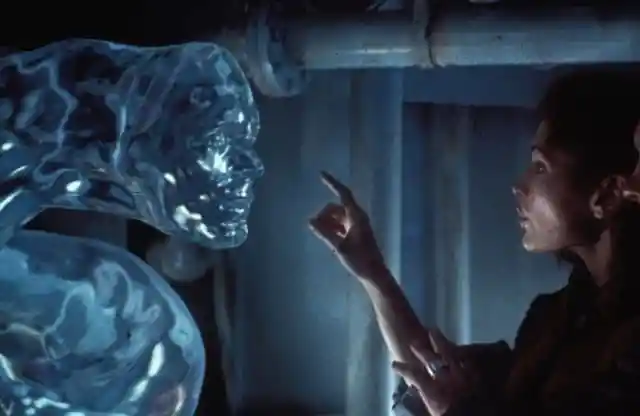
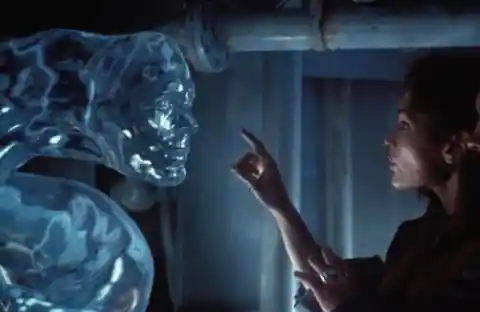
One groundbreaking scene features a sentient tentacle of water which imitates the face of actress Mary Elizabeth Mastrantonio. Critics and audiences were blown away, and filmmakers around the world soon recognized how CGI could add some serious flash to their FX-driven movies.
General Grievous – Star Wars Episode III: Revenge of the Sith
George Lucas' Star Wars prequel trilogy is frequently derided as the moment that Hollywood’s use of CGI hit saturation point, with the latter two films shot almost exclusively on green screens with all digital backdrops and numerous digital characters of variable quality. Even so, Revenge of the Sith’s General Grevious remains an astounding creation.
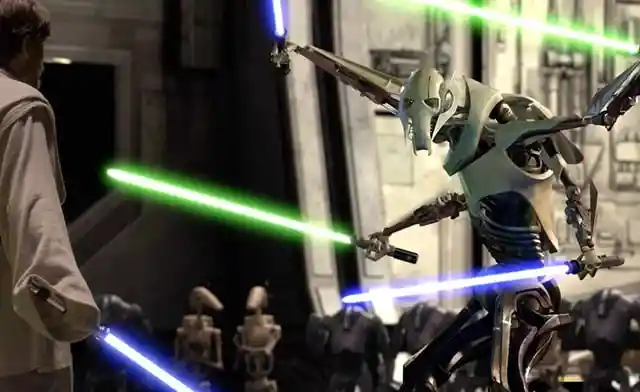
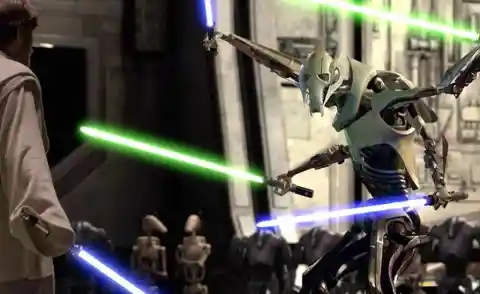
An alien cyborg warlord who collects the lightsabers of his defeated enemies, Grievous is terrifying and barely recognizable as a humanoid creature, particularly when his arms split and he crawls around like a spider: nightmare fuel for many of those who grew up on the Star Wars prequels.
Shelob – The Lord of the Rings: The Return of the King
There’s nothing more terrifying than an eight-legged beast made of eyes and teeth – except for one that’s six feet tall and eight feet long. This is exactly what director Peter Jackson delivers in The Lord of the Rings: The Return of the King, when Frodo and Sam face off against the terrifying giant spider Shelob.
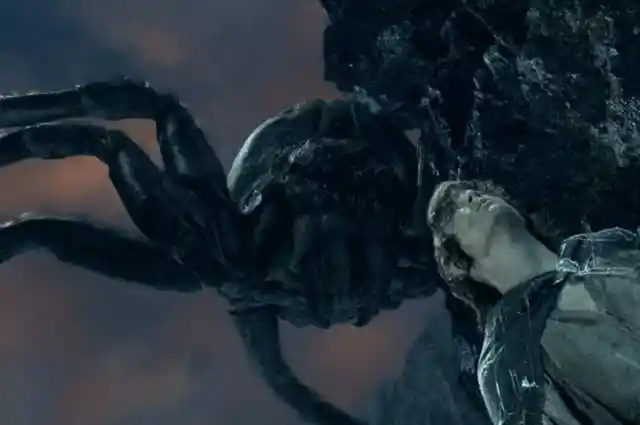
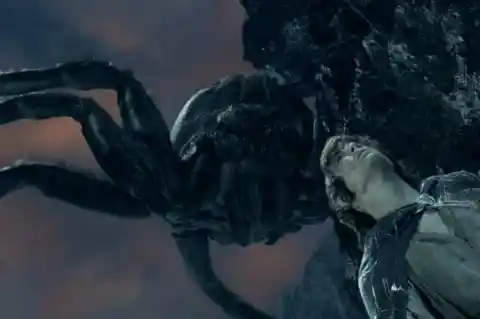
In the books, Shelob actually shows up in second instalment The Two Towers, but Jackson opted to move the spider to his final film to add some real terror to proceedings. Though some might complain that Frodo and Sam’s night-time fight against Shelob helpfully conceals the CGI arachnid, the darkness helps heighten the tension.
The Jötunn – The Ritual
Continuing our recent fascination with all things Scandinavian, 2017 horror movie The Ritual sees a group of stranded campers attacked by a Jötunn, a giant-like creature and spawn of Loki (as in the Norse God of legend, not the Marvel anti-hero).
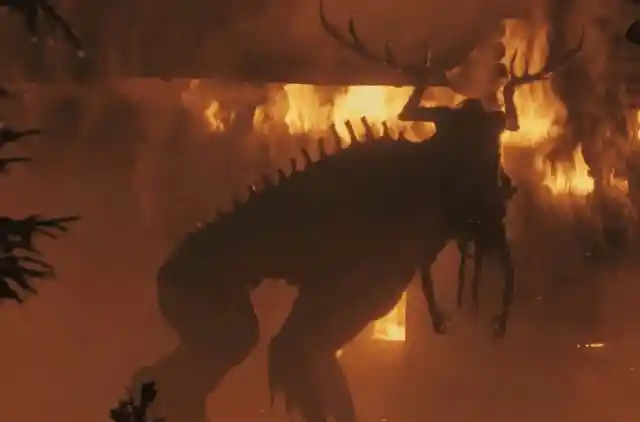
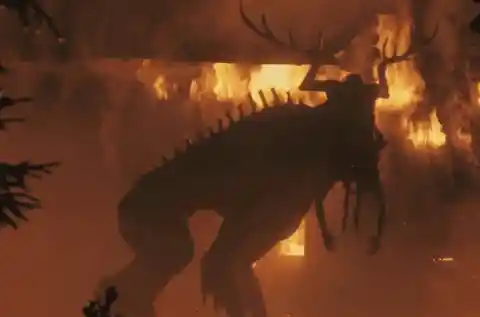
Director David Bruckner wisely opts to keep the creature remains hidden until later in the movie – but when we finally do see it, it’s suitably terrifying: Part stag, part man, and part something else we don’t really want to consider.
Trespasser – Pacific Rim
Director Guillermo del Toro's 2013’s sci-fi action epic Pacific Rim boasts that timeless spectacle of giant robots fighting giant aliens. We could pick any number of the Kaiju (or ‘strange beasts’) for this list, but we’re going to focus on Trespasser.
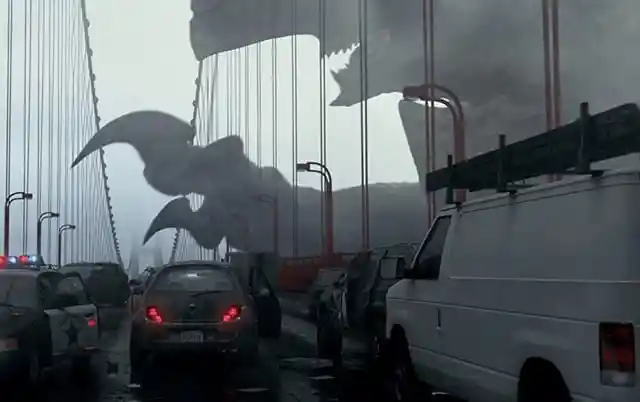
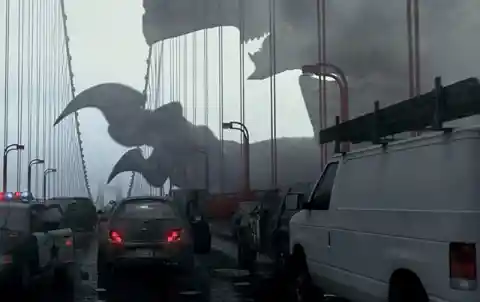
The first beast to attack San Francisco in the film's opening prologue sequence, it’s terrifying and awe-inspiring in equal measure. Though officially dubbed Trespasser, the kaiju's hardened shell, gargantuan claws and mighty cranial ridge have also earned it the nickname ‘Axehead’.
Ihmotep – The Mummy (1999)
1999’s reboot of classic horror The Mummy cast Arnold Vosloo as the titular Ancient Egyptian antagonist, and while the South African actor does a terrific job of making the character menacing, he's helped along the way by some tremendous use of CGI.
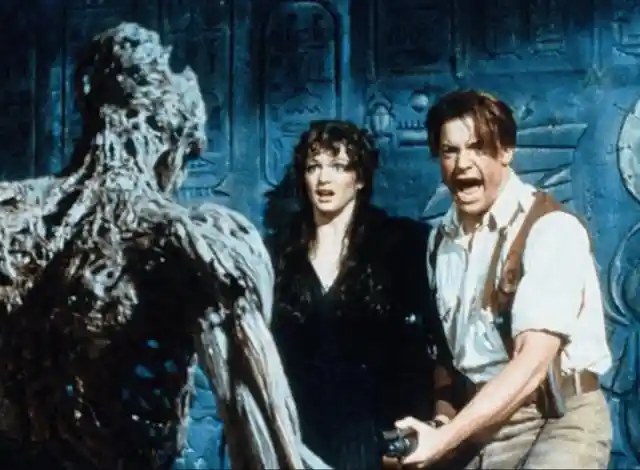
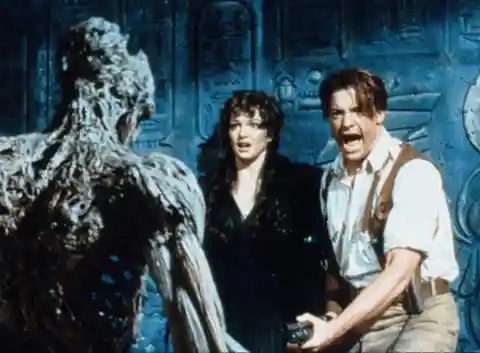
At first he’s little more than a skeleton but gradually becomes more human in form, as well as possessing great magical powers such as conjuring tidal waves and sandstorms with his face. These effects were pretty groundbreaking for 1999, taking $15 million of the production’s $80 million budget.
Grendel – Beowulf (2007)
When Beowulf was released in 2007, its CGI was nothing short of groundbreaking. It was the second of three films from director Robert Zemeckis to be shot entirely via motion capture CGI (the first being The Polar Express, the last A Christmas Carol). While this approach proved divisive, it certainly made the films visually distinctive.
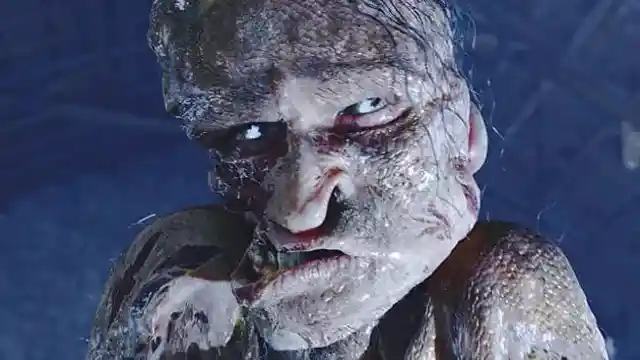
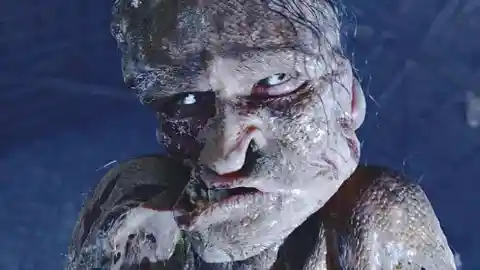
Grendel – the first monster the movie’s hero faces off against – is particularly striking, a hulking mass of twisted flesh and sinew that is utterly revolting to look at. Perhaps most impressive is the range of emotions visible in the creature’s facial expressions, thanks to Crispin Glover’s motion capture acting.
The Balrog – The Lord of the Rings: The Fellowship of the Ring (2001)
Undoubtedly the most memorable monster in the first Lord of the Rings movie is the Balrog. Though the books describes it as being about the size of a man, Peter Jackson decided to use CGI to create an altogether more imposing foe for Ian McKellen's Gandalf and the rest of the Fellowship.
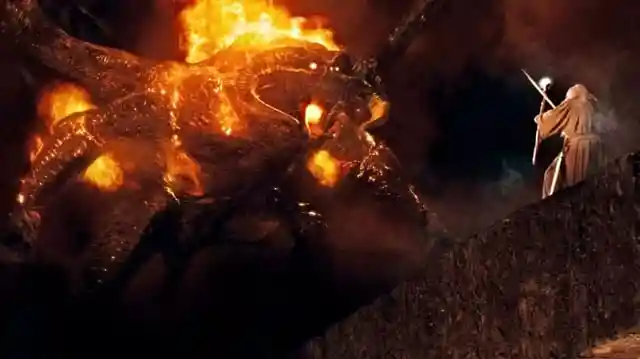
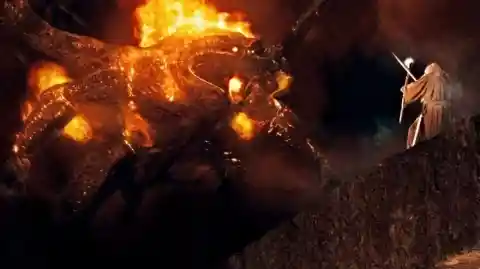
The results speak for themselves, with the Balrog – standing dozens of meters tall and wreathed in flame – providing one of the most visually spectacular moments in the entire franchise. When Gandalf stands up to the beast, there's no questioning the stakes of the showdown.
Shrike – Mortal Engines (2018)
Shrike, the secondary villain of 2018’s Mortal Engines, is hellbent on killing the movie’s hero and turning her into an undead cybernetic corpse like himself, so that they can be together for ever. With a motive that unsettling, Shrike’s appearance had to be suitably scary, and thanks to the CGI it absolutely is.
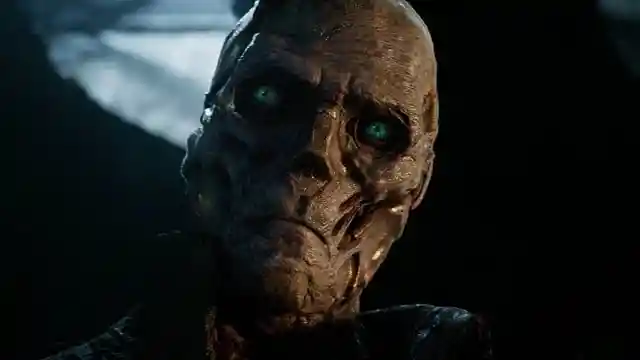
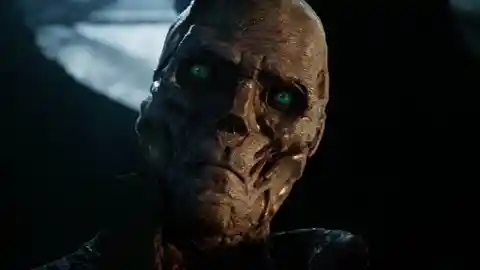
Mortal Engines director Christian Rivers knows a thing or two about great CGI, being a veteran SFX artist and Academy Award winner for his work on Peter Jackson's King Kong. Unfortunately, the film's epic visual spectacle wasn't enough to save Mortal Engines from being a massive box office flop.
The Monster – The Host (2006)
14 years before South Korean director Bong Joon-Ho's groundbreaking Oscar success with 2019's Parasite, the filmmaker gave audiences the acclaimed sci-fi horror The Host, an unusually intelligent and hard-edged take on the classic monster movie format, with one of the most impressive CGI monsters ever seen outside of a Hollywood production.
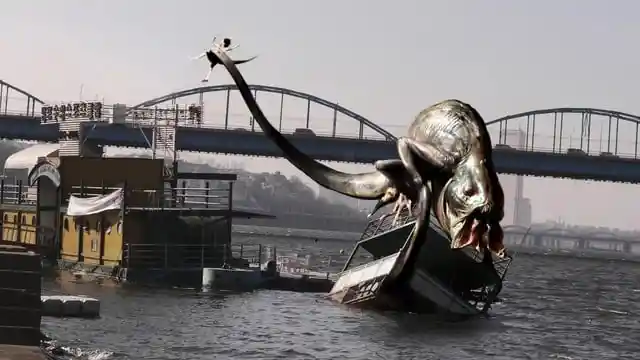
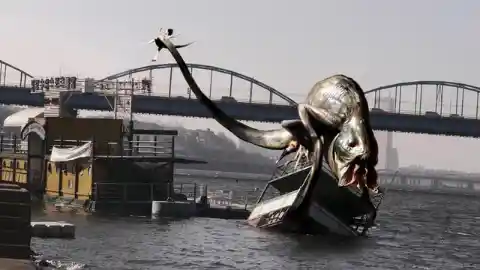
Many CGI monsters are shown in dark environments because it's harder to make them look good in well-lit conditions. This makes the creature in The Host all the more impressive, as it spends much of the film rampaging in broad daylight, a creative decision which must have made life difficult for the animation team.
Pennywise – It (2017)
Tim Curry's blood-curdling turn as the evil, otherworldly clown Pennywise in the original 1990 TV adaptation of Stephen King's It was always going to be a hard act to follow. Director Andy Muschietti's 2017 film adaptation met the challenge thanks to both a startling performance from Bill Skarsgård and some extraordinary CGI.
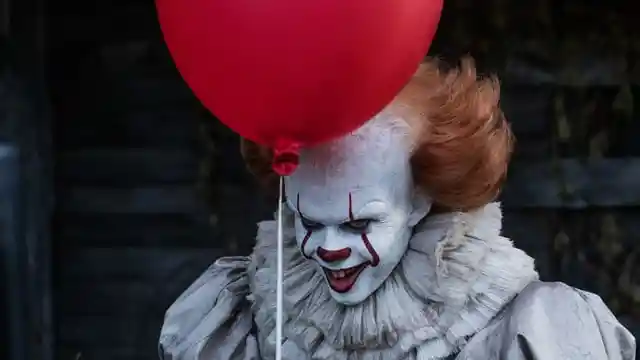
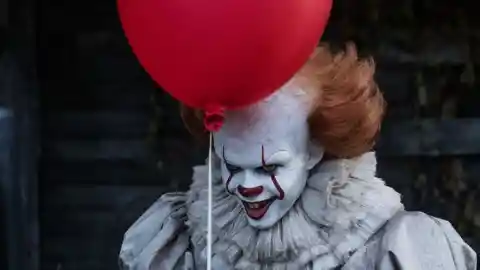
While Skarsgård's acting deserves top marks, the film's use of digital effects takes things to another level of creepiness. Take the way that Pennywise morphs and shape-shifts, particularly when his face splits open to reveal jaws lined with hundreds of needle-like teeth; truly terrifying stuff.
Tooth Fairies – Hellboy II: The Golden Army (2017)
Guillermo del Toro's spectacular sequel Hellboy II: The Golden Army boasts a slew of monsters, many of them big, and many of them (including the title character) brought to life almost entirely with practical makeup. However, the film's most impressive and chilling CGI creations are, perhaps surprisingly, tooth fairies.
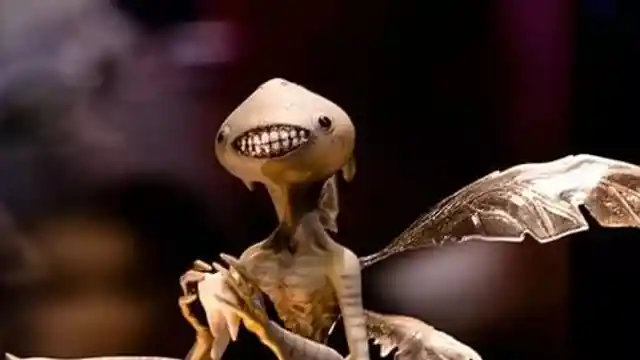
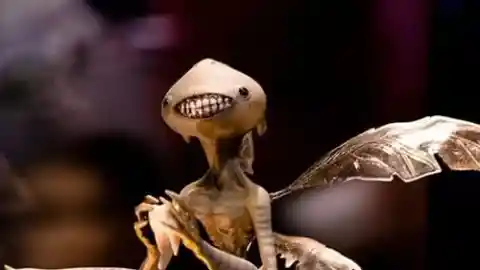
At first glance, the tooth fairies in Hellboy II seem almost cute. Then, the fairies attack in a vicious swarm, their jaws opening unsettlingly wide to reveal a horrifying set of teeth. It’s credit to the efforts of the movie’s animation team that creatures so small can be so sinister.
Mothra – Godzilla: King of the Monsters (2019)
Godzilla has graced the silver screen so many times that audiences are somewhat desensitized to the gargantuan atomic reptile. However, when Mothra returned in 2019's Godzilla: King of the Monsters, the mighty moth hadn’t appeared onscreen since 1992, and CGI has come a long way since then.
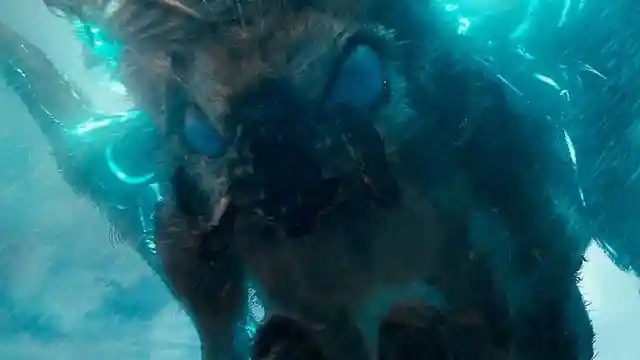
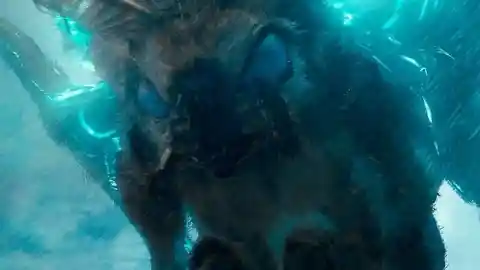
While Mothra’s basic form remains unchanged, the way the creature’s wings flash with color is a great addition that makes for a much richer visual feast. Of course, the CGI team on director Michael Dougherty's film also deserve props for their excellent realization of King Ghidorah, Rodan, and of course the Big G himself.
Sandworms – Dune (2021)
Director David Lynch's original 1984 adaptation of Frank Herbert's epic sci-fi novel Dune didn't set the bar particularly high in terms of storytelling or visual effects. Happily, Denis Villeneve's 2021 reinterpretation did a considerably better job bringing the story to life, helped along the way by some great CGI.
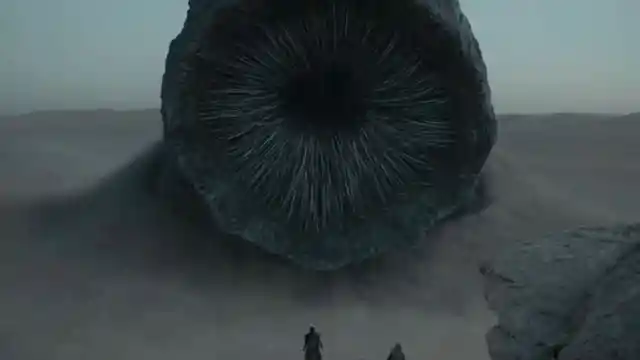
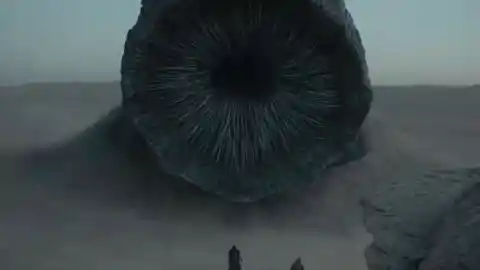
Easily the most visually impressive creatures in Dune, Sandworms are almost-inconceivably big monsters that dwell beneath the titular planet’s sands. The VFX team spent considerable time getting the Sandworms right, carefully designing them to look like animals that could actually exist and making sure they displace the sand they move through in a realistic way.
The crocodile – Rogue (2007)
More often than not, the very best CGI creations are the ones the audience doesn't even realise are CGI. Some such creatures can be seen in 2007’s Rogue, which follows a group of tourists who finds themselves on a man-eating croc’s menu in the Australian outback.
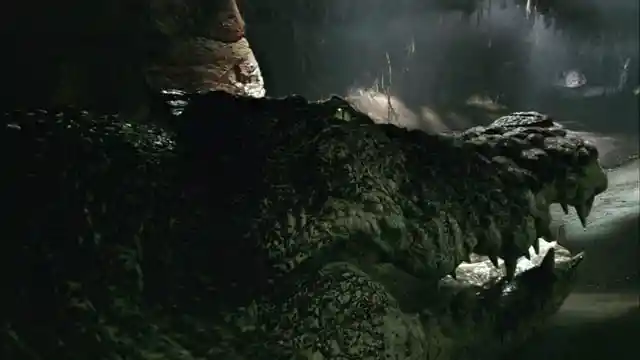
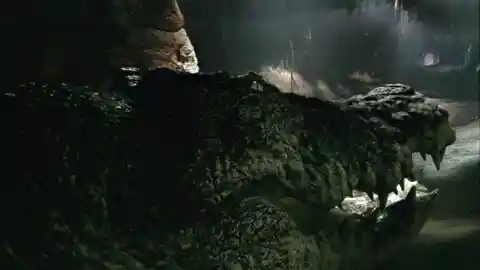
To heighten the terror and sense of authenticity, real footage of crocodiles was used wherever possible. The fact that it’s not easily noticeable when the CGI croc takes over is testament to the skill of Weta Workshop, a New Zealand-based special effects production company.
The Pale Man – Pan’s Labyrinth (2006)
Whilst director Guillermo del Toro has always championed the use of makeup and practical special effects, he has also always recognized the value of CGI to take things to the next level. Del Toro's knack for blending the two approaches is used to remarkable effect on arguably his best film, Pan's Labyrinth.
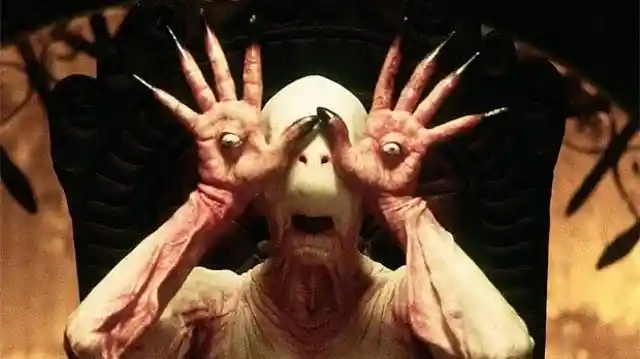
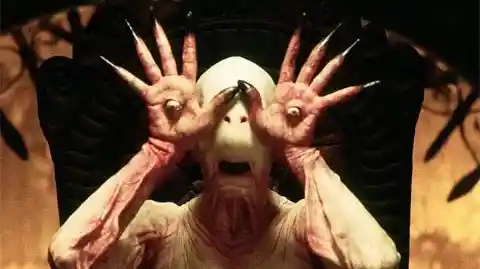
Although he’s only onscreen for a matter of minutes, the Pale Man from Pan’s Labyrinth is one of the scariest and most memorable monsters in the history of cinema. He was created with a blend of traditional prosthetics and CGI, with the movements of actor Doug Jones bringing the horrifying creature to life.
The trolls – Troll Hunter (2010)
A Norwegian horror gem, 2010’s Troll Hunter proves that you don’t need a massive budget to craft convincing CGI. Writer-director André Øvredal's found footage fantasy horror was made for the equivalent of $3.5 million US, yet it boasts some of the most remarkably lifelike digital monsters you'll ever see.
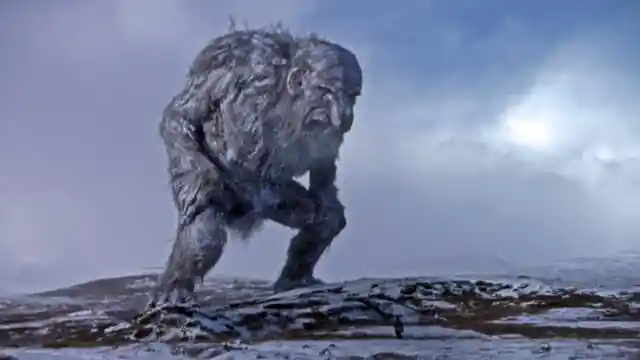
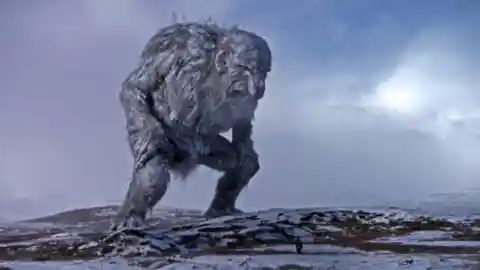
While the movie deftly uses its found footage format to ensure the camera never lingers on its animated trolls for too long, when the giant creatures are visible the CGI is impressively convincing and wholly terrifying. It's enough to make you believe Norway is genuinely teeming with these mythic monsters.
Werewolves – The Cursed (2021)
There’s not exactly a shortage of werewolf films, and most moviegoers are pretty familiar with their traditional form. Most of the best movie wolves (i.e. 1940's The Wolf Man and 1981's An American Werewolf in London) have been achieved practically, but CGI can do the job too, as demonstrated by 2021's The Cursed.
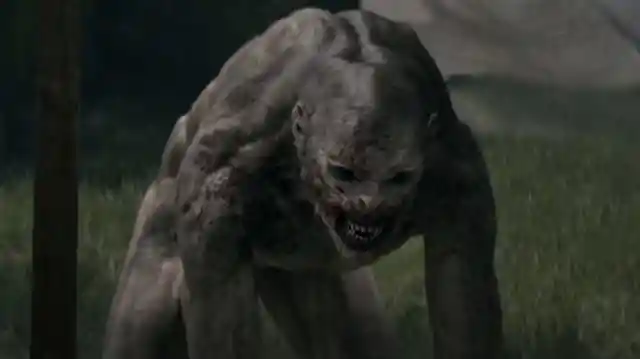
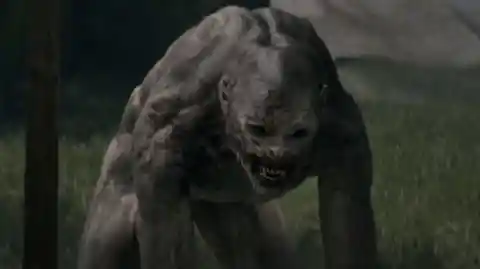
Writer-director Sean Ellis' film shakes things up by taking a fresh approach to the look of its CGI lycanthropes. Far from the traditional hairy brutes, these ones have hairless bodies and humanoid faces that are original and horrifying in equal measure. Most importantly, they're very well rendered.
Alien parasites – Slither (2006)
Before he became one of the most prominent comic book move filmmakers around, James Gunn made his directorial debut with dark comedy sci-fi horror Slither, in which slug-like parasites from outer space infest a small town. The movie boasts plenty of great effects, both practical and digital.
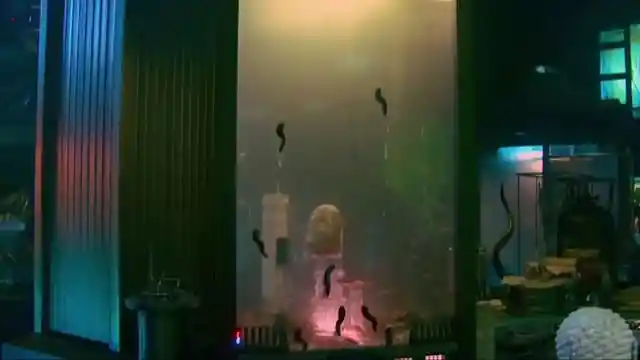
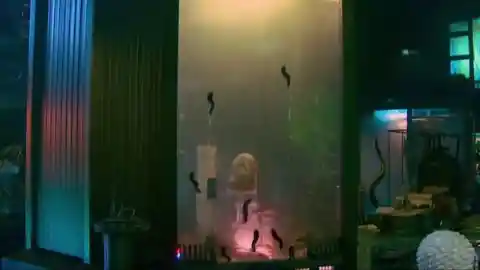
Slither has uniformly good CGI, especially for a film released in 2006. While the transformation scenes are suitably gruesome, the animation truly shines when it comes to those creepy little slugs, with their writhing movements and glistening skin making for extremely disconcerting viewing.
Reapers – Blade 2 (2002)
Although the first Blade movie suffered from some glaringly bad animation, by the time the sequel rolled round in 2002 CGI had come on leaps and bounds. This is most evident when it comes to the film's principal antagonists, a mutant strain of vampires dubbed the Reapers.
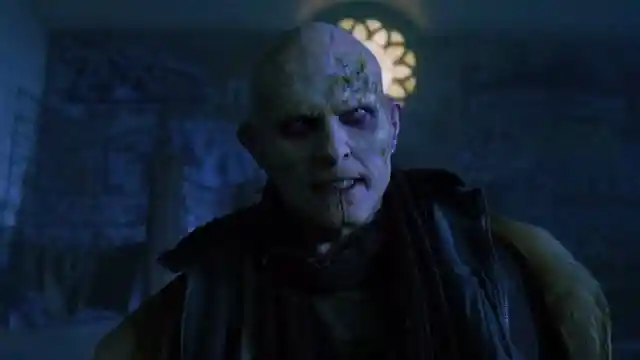
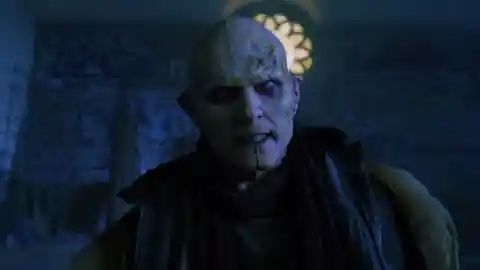
These horrifying uber-vampires have the ability to open their mouths gaping horrifyingly wide to reveal vicious fangs and a long, protruding tongue that acts like a syringe. This horrific twist is revealed in two scenes back to back, one of which uses CGI whilst the other uses an animatronic. Can you tell which is which?
Sugarplum Fairy – Cabin in the Woods (2012)
Director Drew Goddard's 2011 horror The Cabin in the Woods presents an ambitious and madcap takes on the horror genre. Starting out, it seems to follow all the stereotypes to the letter, but by the final act it turns into something utterly bizarre boasting a jarringly wide array of monsters.
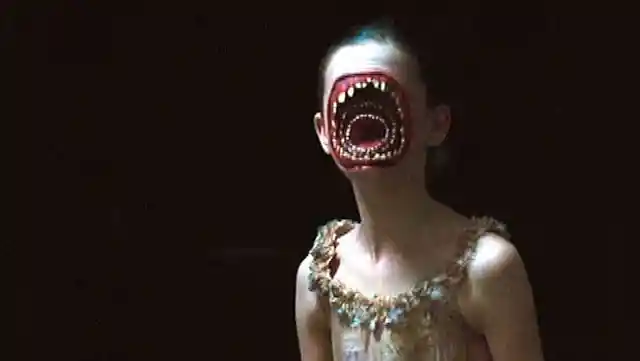
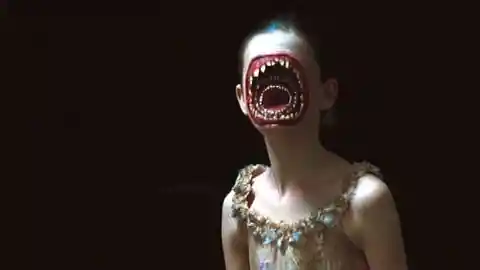
By far the creepiest of the creatures to show up in The Cabin in the Woods' last scenes is the Sugarplum Fairy, which appears to be a young girl in a ballerina’s costume until it turns around, revealing a face covered in concentric rings of jagged teeth. That's CGI used well.
Sandman – Spider-Man 3 (2007)
The CGI sequences in 2007’s Spider-Man 3 were so ambitious that animators had to build entirely new programs in order to create them. While the glob of sentient sinew that is Venom is definitely visually impressive, the movie’s pièce de résistance is the scene in which Flint Marko falls into a particle accelerator, turning him into Sandman.
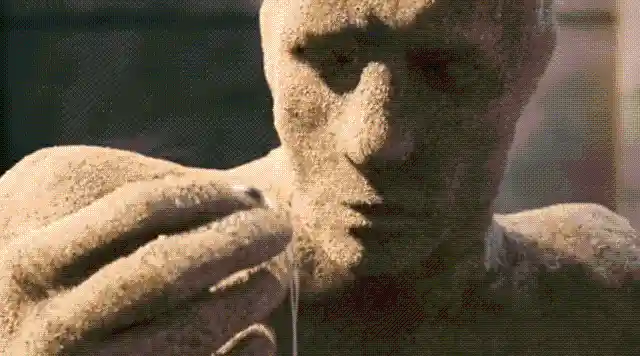
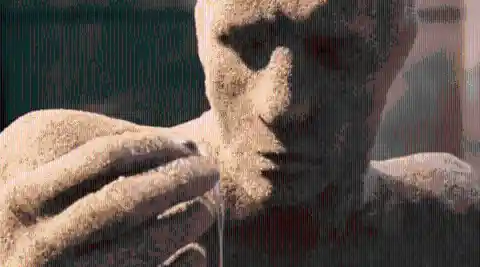
It's one thing that the animators were able to make a shape-shifting sand-based humanoid scary to look at. However, thanks in large part to actor Thomas Haden Church's performance, the villain also carries an unexpected emotional weight even in digital form.
The spiders – Eight Legged Freaks (2002)
While it's probably best remembered today for boasting an early appearance from a young Scarlet Johansson, 2002's Eight Legged Freaks is also notable for being one of the most entertaining monster movies of its era, centered on spiders who - in classic B-movie style - have become gigantic due to toxic waste.
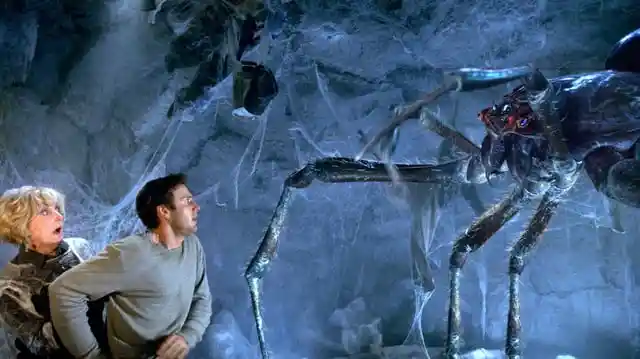
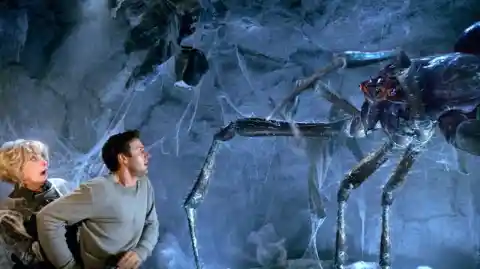
An arachnophobe’s worst nightmare, the film's overgrown arachnids are brought to life with CGI that still looks decent even by today’s standards, and it’s almost impossible not to wince whenever one of them gets a hold one of the movie’s characters.
Vampires – Priest (2011)
There are more vampire movies than you can shake a wooden stake at, so finding ways to keep the mythic monsters fresh is challenging for filmmakers. Director Scott Stewart's 2011 action horror Priest deftly resolves this problem with cutting-edge CGI.
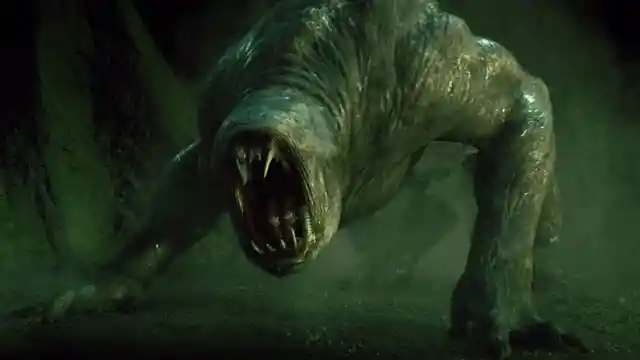
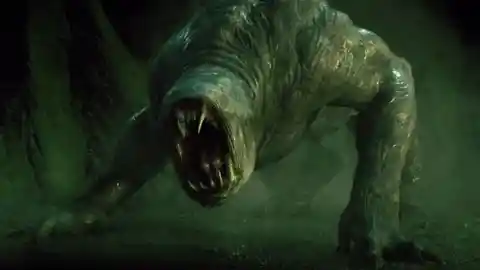
We're accustomed to vampires that look like Bela Lugosi of Kiefer Sutherland, but Priest's bloodsucking beasts are hulking, feral beasts that have almost nothing in common with other representations of the monsters aside from the teeth. They're icky but very impressive digital creations.
Sando Aqua Monster – Star Wars – Episode I: The Phantom Menace (1999)
Star Wars Episode I: The Phantom Menace had its fair share of woeful CGI creations: we're looking at you, Jar Jar, not to mention the rest of your Gungan buddies. Even so, George Lucas' spectacular space opera still boasted some stunning digital creations here and there.
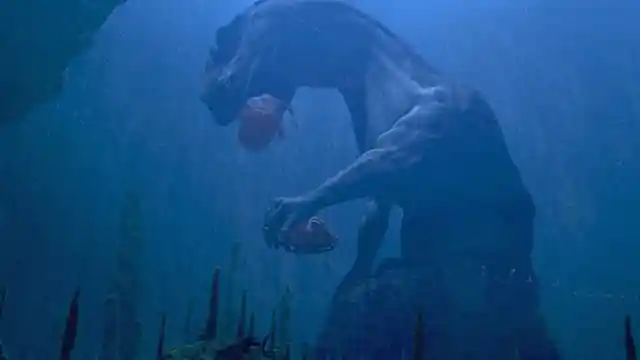
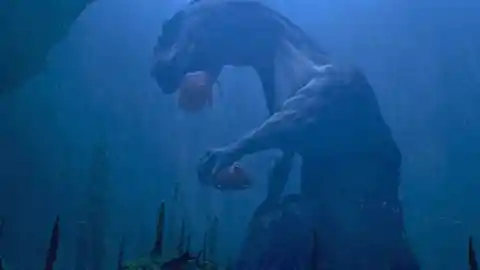
Case in point is the Sando Aqua Monster, a ferocious aquatic predator that inadvertently saves the movie’s heroes by eating the monstrous fish which is chasing them. The mighty monster doesn't appear on screen that long, but it makes a strong impression and still looks great today.
M3GAN – M3GAN (2023)
Little miss M3GAN took the Internet by storm when her now-iconic dance went viral in early 2023. Tapping into timely fears about AI, the film's central super-doll left viewers unsure if what they were seeing was a puppet, a human being in makeup, or a digital creation.
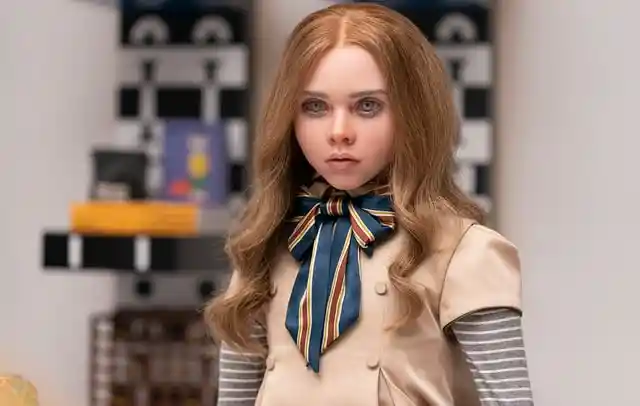
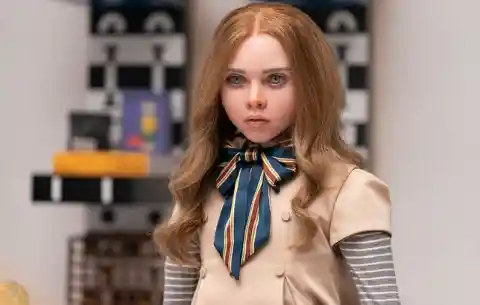
In truth, the homicidal doll was bought to life mostly through puppetry and a performance from young actress Amie Donald. However, in order to fully create the uncanny-valley look of her face, CGI was utilized. The end result was genuinely uncanny and seriously creepy.
Jean Jacket – Nope (2022)
After the success of his groundbreaking and acclaimed horror movies Get Out and Us, writer-director Jordan Peele moved in more of a sci-fi direction with 2022's Nope. And of course, it's long since been the norm that any film take on science fiction will call for the use of CGI.
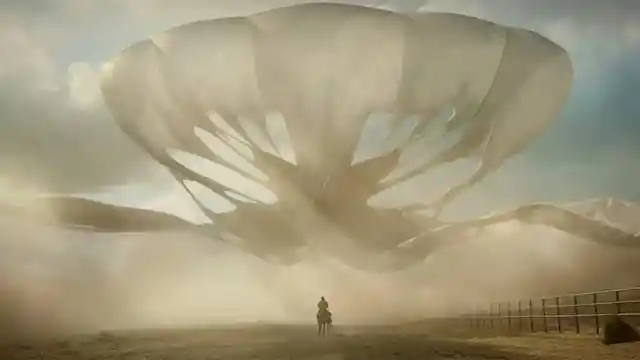
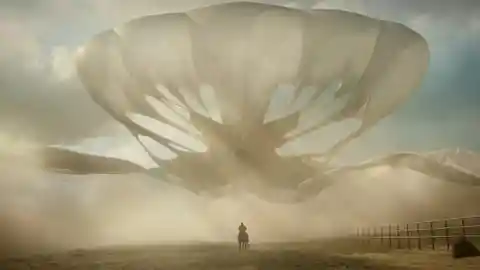
For most of Nope’s runtime, the mysterious UFO is assumed to be some kind of alien spaceship. The eventual reveal – that it’s actually a predatory biological organism – is genius, which, coupled with some outstanding CGI, results in an unforgettable movie monster that’s as beautiful as it is terrifying.
Megalodon – The Meg (2018)
Megalodons - ancestors of the Great White shark, measuring upwards of 70 feet in length - have appeared in a number of schlocky B movies over the years. However, it wouldn’t be until 2018 that the prehistoric monsters would get the CGI treatment they desperately deserved.
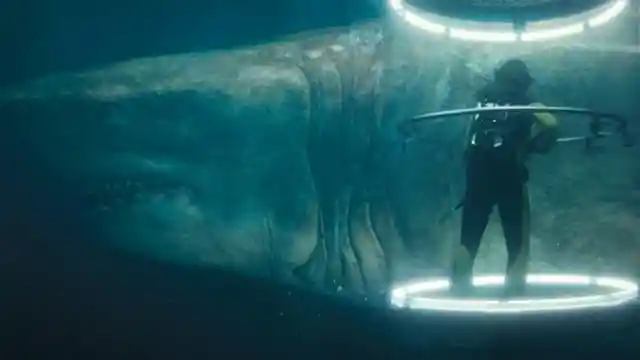
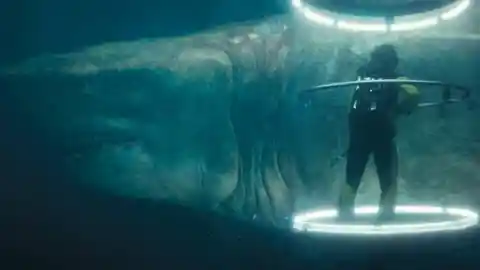
With a budget of $130 million, the makers of The Meg were able to accurately convey the sheer, horrifying size of these mercifully extinct predators. It's rare that any screen antagonist looks like they could pose a real threat to big screen hard man Jason Statham, but this CGI beastie does it.
Dren – Splice (2009)
Some naysayers tend to liken today's CGI-enamored filmmakers with Dr Frankenstein, accusing them of being too blinded by their technological advances to recognize their creations for the monstrosities they are. In a sense, writer-director Vincenzo Natali's Splice addresses this complaint head on - with the use of above-average CGI.
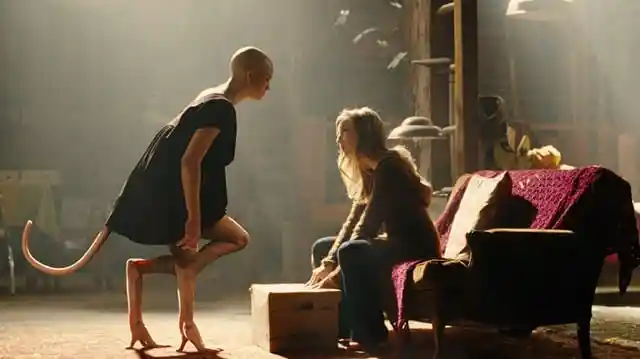
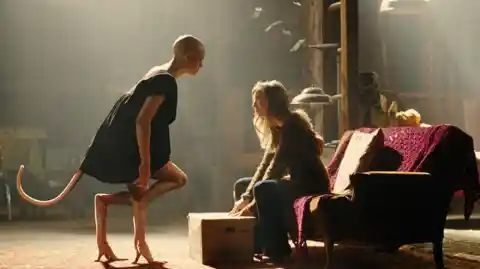
Dren – a genetically modified organism dreamed up by two ambitious bioengineers in the 2009 sci-fi horror – remains one of the most visually distinctive monsters in recent horror history. With bizarrely jointed legs, wings and a prehensile tail equipped with a stinger, Dren’s appearance is as hypnotic as it is unnerving.
Rathtars – Star Wars: The Force Awakens (2015)
The return of the Star Wars franchise with 2015's The Force Awakens demanded certain key elements, one of which was new, suitably memorable alien monsters, preferably realized with far better CGI than the prequel trilogy. Happily, JJ Abrams' film managed just this with the appearance of the Rathtars.
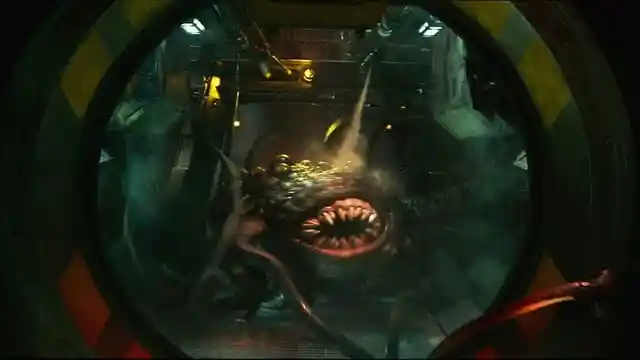
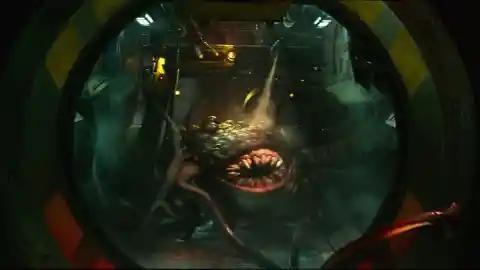
Appearing only briefly. Rathtars are predatory aliens that look like giant meatballs with tentacles and teeth. If that doesn’t sound overly horrifying, that’s because J.J. Abrams instructed the VFX team to make them “family scary.” While they’re not the most terrifying of CGI monsters, they still look visually impressive.
Gingerbread Men – Krampus (2015)
One might anticipate that the scariest thing in a movie about Krampus, the monstrous anti-Santa of Alpine folklore, would be - well - Krampus himself. However, director Michael Dougherty's movie features some other, seemingly more innocuous critters that prove even more unnerving: living gingerbread men.
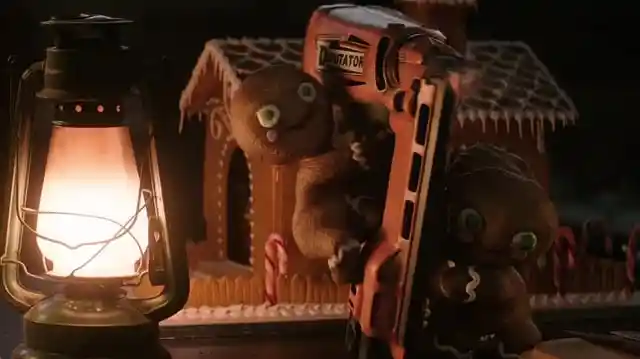
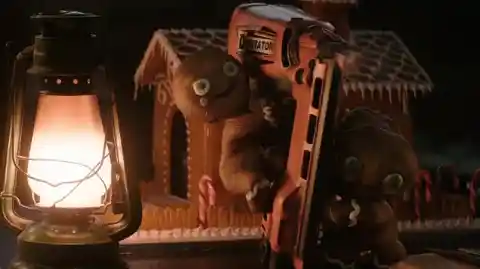
While the eponymous Krampus was mostly brought to life with practical effects, arguably the movie’s best sequence makes use of excellent CGI as a squad of demonic gingerbread men attack the beleaguered Engel family. This spectacle is made all the more alarming yet darkly funny as they wield such festive weapons as sharpened candy-canes.
Aliens – Attack the Block (2015)
The directorial debut of Joe Cornish and the film that first brought future Star Wars actor John Boyega into the spotlight, 2011’s Attack the Block sees a run-down London apartment complex come under siege by vicious, carnivorous monsters from outer space. The aliens in question are some of the most unique ever seen on screen.
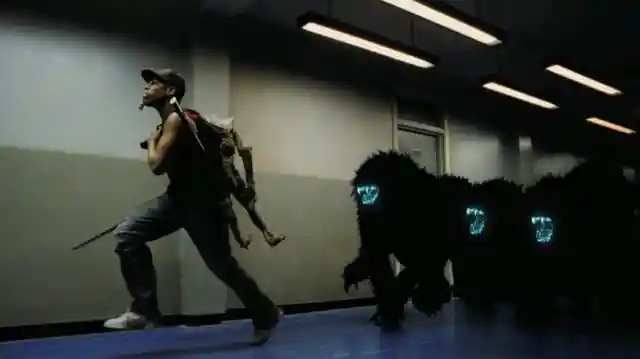
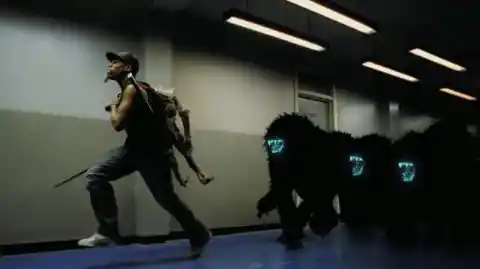
Ape-like and fluffy with glowing blue fangs and entirely black fur, these intimidating extra-terrestrials were brought to life by having stuntmen run around in green-screen suits, with CGI used to overlay the creatures in post-production. The effect is striking, and belies the fact that the film only cost around $12 million.
Dragons – Reign of Fire (2002)
2002 action fantasy Reign of Fire casts Matthew McConaughey and Christian Bale as post-apocalyptic warriors in a modern world overrun by dragons. Many viewers were disappointed by how little the central monsters actually appear in the film, but when they are on screen, the big beasts really make their presence felt.
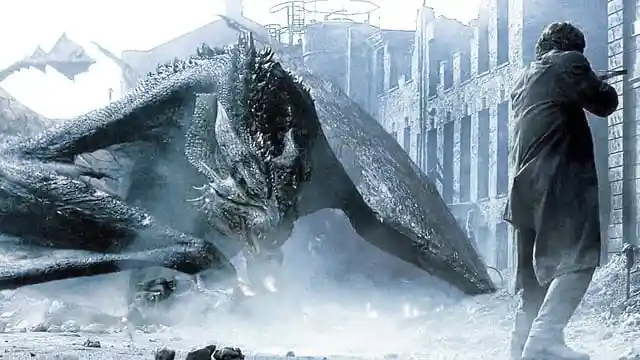
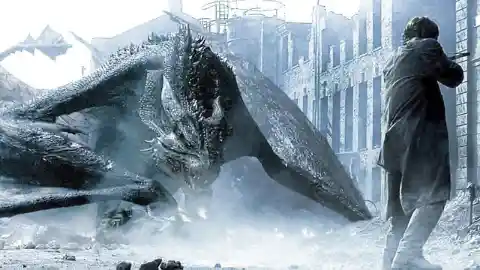
Dragons are notoriously difficult to animate, given their vast scale and the complexity of their movements, which normally include both crawling and flying. This makes the animation in Reign of Fire all the more impressive, with the winged fire-breathers presenting an impressively-terrifying visual spectacle.
Sarah – The Void (2016)
Written and directed by Steven Kostanski and Jeremy Gillespie of independent filmmaking collection Astron-6, 2016's The Void is a heartfelt homage to the horror movies of the 80s and the writings of HP Lovecraft. The low-budget production paid for its visual effects via an Indiegogo campaign, which earned the filmmakers $82,510.
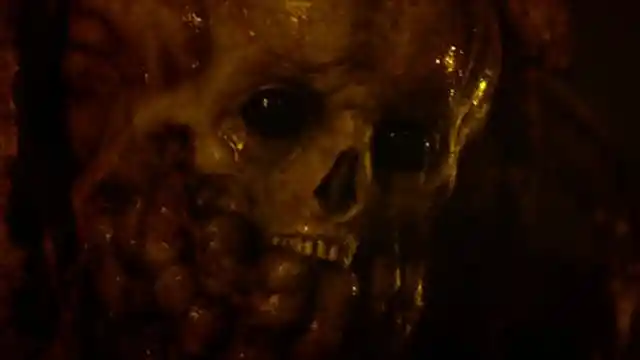
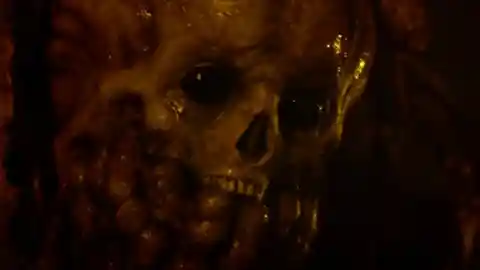
The results give audiences some idea of what 80s horror might have looked like if the filmmakers of that time had today’s CGI at their disposal. The most impressive – and downright revolting – moment comes when a recently deceased woman named Sarah is resurrected by her grieving father.
Godzilla – Godzilla (2014)
While Godzilla has stomped his way onto the silver screen almost 40 times, most of his movie incarnations have relied on puppets and practical effects. The first 28 Japanese productions used men in suits, whilst the 1998 Hollywood version used a mix of CGI and animatronics.
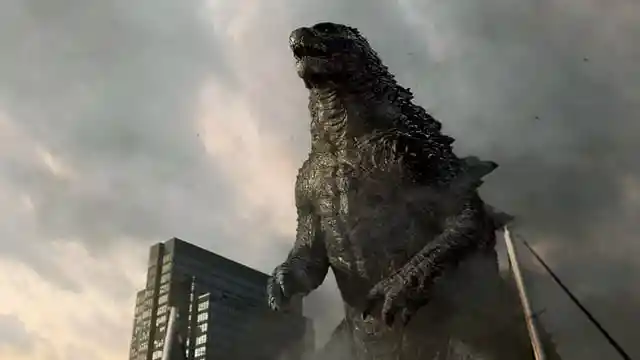
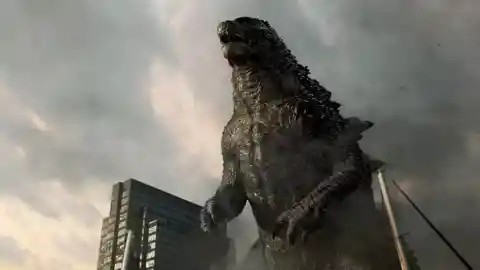
2014’s Godzilla reboot marked the first time the world got to see the atomic lizard rendered in truly cutting edge CGI, with results as spectacular as they are terrifying. Many grumbled about the titular monster only being on screen for 11 minutes in the two hour film, but those few minutes are made to count.
Subsiders – Daybreakers (2009)
Written and directed by siblings Michael and Peter Spierig, 2009's Daybreakers blends elements of supernatural horror, science fiction and action to present an ambitious new take on vampires. The film is set in a future where almost the entire population has turned into blood suckers.
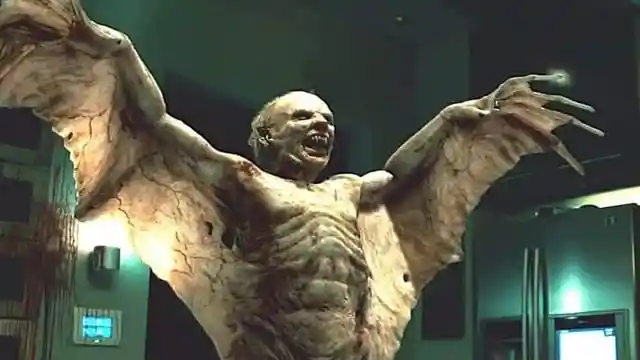
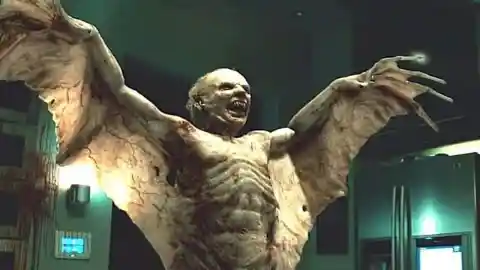
Without enough blood to sustain all of them, some of the vampires have devolved into Subsiders, hideous mutant-like creatures that can feed on humans and vampires alike. These, like so many great movie monsters, were brought to life with an impressive blend of practical makeup effects on camera, and digital augmentation in post-production.
Xenomorph – Alien: Covenant (2017)
The original 1979 Alien is often held up as an example of how to create scary creatures without animation; its central monster was simply a man in a suit, carefully lit and shot to make it look as real as possible. 1986 sequel Aliens took much the same approach, but with more men in suits.
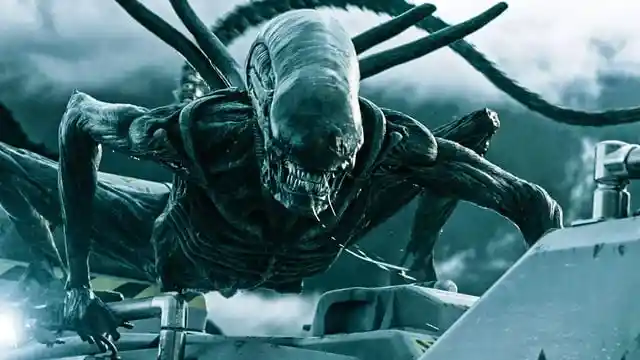
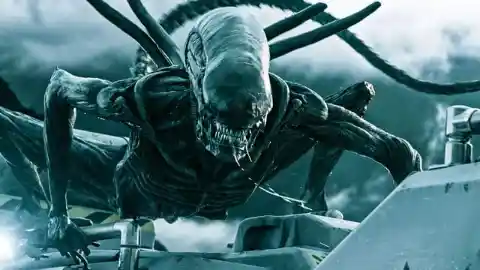
Of course, subsequent Alien movies have leaned more into CGI, and this was utilized most effectively on 2017’s Alien: Covenant. While the design of the menacing Xenomorph looks much the same, digital effects allow the monster to spend more time on camera and move more fluidly than before.
The doppelgänger – Annihilation (2018)
As viscerally terrifying as Annihilation’s mutant bear might be, this is not the only impressive and unnerving digital creation to appear in director Alex Garland's surreal sci-fi horror. There's also the eerie doppelgänger which Natalie Portman's Lena faces off against in the movie's climax.
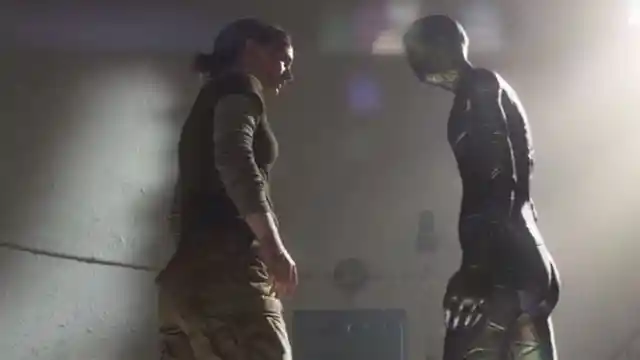
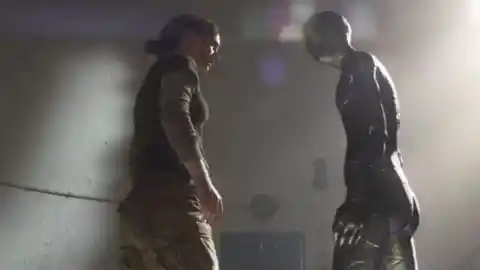
The creature’s intentions – or whether it even has any – are completely mysterious, but its shifting, metallic skin and featureless face still make it incredibly sinister. For old school CGI fans, it's also reminiscent of such early digital wonders as The Abyss' water tentacle and Terminator 2's liquid metal T-1000.
Galactus – Fantastic Four: Rise of the Silver Surfer (2007)
Neither 2005's Fantastic Four nor its 2007 sequel are typically held up as great superhero movies, and many comic book fans were unhappy with how second film Fantastic Four: Rise of the Silver Surfer mishandled the Galactus storyline - not least because Galactus's iconic look was ditched in favor of making him a big cloud.
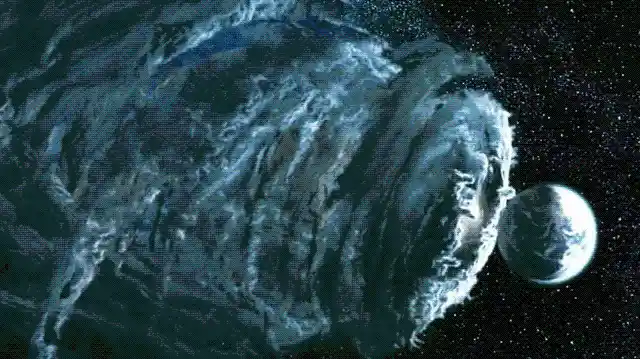
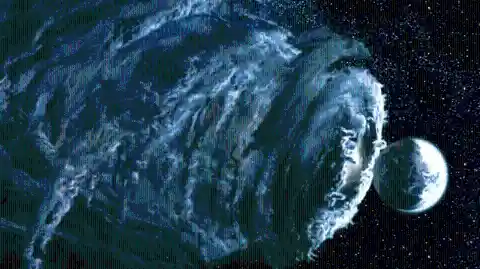
Still, while we might mourn the loss of the planet-eating alien in the purple suit and helmet, this big screen reinterpretation of Galactus is still pretty intimidating: a whirling, sentient space vortex intent on literally eating Earth. You might not like the idea, but there's no denying the CGI team did a good job.
Calvin – Life (2017)
Director Daniel Espinosa's 2017 science fiction horror Life sees the crew of a space station find proof that intelligent life exists outside our world, only to find themselves under attack by it. As the film's monster is a shape-shifting organism, a popular fan theory posited that the film might be a stealth prequel to Venom.
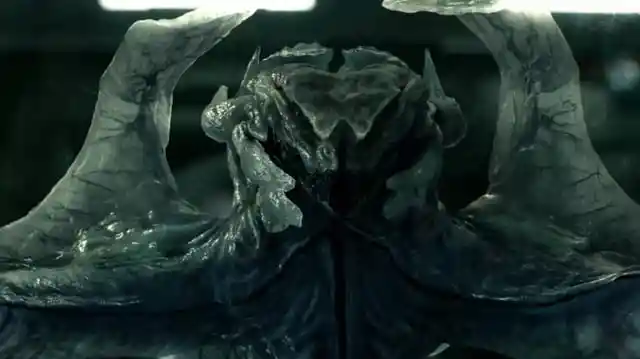
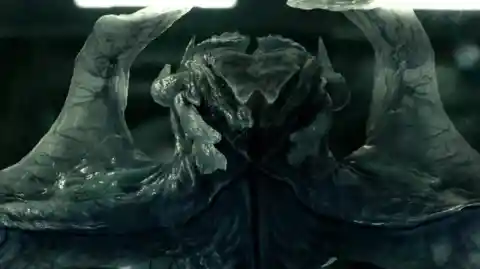
Although it starts the movie as a harmless single-celled organism, the Martian life-form nicknamed Calvin grows at an exponential rate and is able to change the shape of its body at will. The CGI gets increasingly more impressive – and terrifying – as Calvin rapidly evolves into more complex forms.
Skull Crawlers – Kong: Skull Island (2017)
In the wake of 2014's Godzilla, studio Warner Bros and production house Legendary set the stage for a shared 'Monsterverse' with 2017's Kong: Skull Island. Director Jordan Vogt-Roberts presents a bold new take on King Kong set against the backdrop of the Vietnam war, boasting some impressive monster-on-monster action.
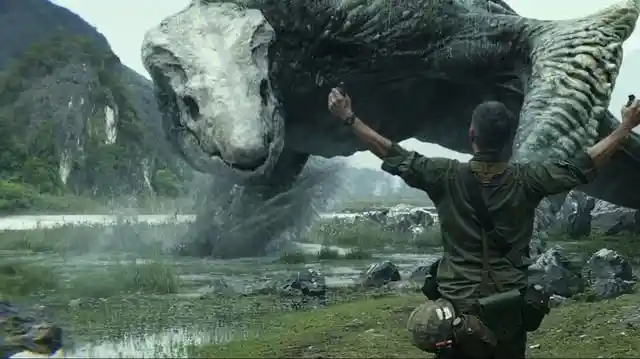
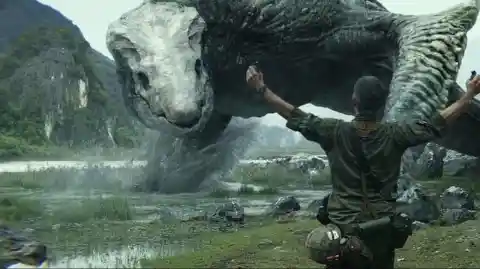
This film answers the question of what happened to the rest of King Kong’s species: the Skull Crawlers, a race of giant reptiles that look like a cross between a crocodile and a snake. While the monsters look undeniably scary, it’s the lumbering, undulating way they move that makes them truly horrifying.
Koba – Dawn of the Planet of the Apes (2014)
While the original Planet of the Apes movies of the 60s and 70s had to make do with (admittedly impressive) prosthetics and makeup, the more recent reboot trilogy had the advantage of cutting edge CGI and a massive budget. It shows, especially on 2014's second film Dawn of the Planet of the Apes.
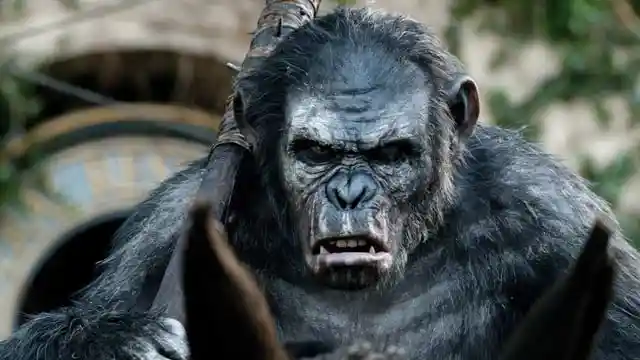
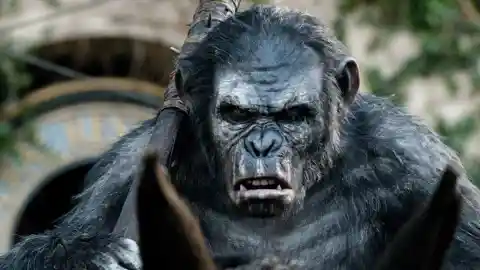
While all the apes look fantastic, Koba (portrayed in mo-cap by actor Toby Kebbell) stands out as a particularly impressive achievement. With incredible attention to detail allowing his animated visage to clearly display his simmering hatred. Kebbell's acting and cutting edge CGI combine to create a truly chilling character.
Thanos – Avengers: Infinity War (2018)
Thanos remains the most formidable antagonist in the Marvel Cinematic Universe, and 2018's Avengers: Infinity War wouldn't have carried half the punch it does had the character not been brought to life correctly. Happily, Joe and Anthony Russo's movie manages to make the purple giant seem real, and truly intimidating.
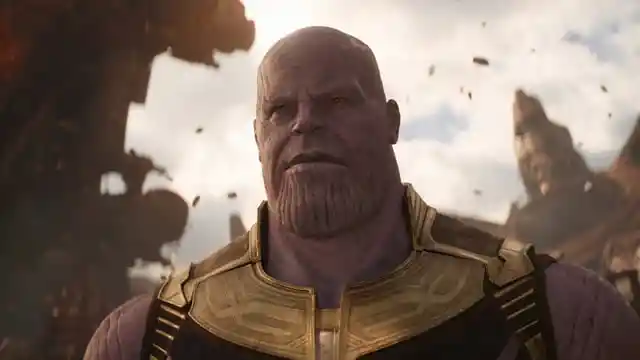
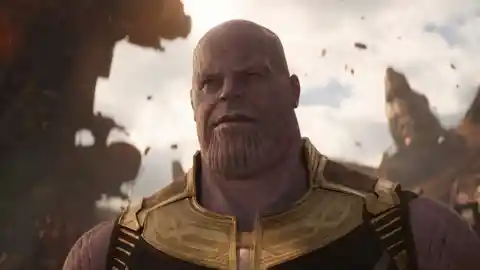
While portrayed by actor Josh Brolin (who, in reality, is big but not quite that big), the 8'3" brute is entirely CGI. On set, Brolin wore a highly advanced motion capture rig, with a Thanos puppet head above his own to help his fellow actors get the eyeline right.
Heptapods – Arrival (2016)
Before taking the helm on Blade Runner 2049 and the Dune movies, Canadian director Denis Villeneuve proved he knew how to do science fiction seriously with 2016's Arrival. The Oscar-nominated movie casts Amy Adams as a linguist tasked with helping humanity communicate with the inhabitants of an alien spacecraft which has landed in Montana.
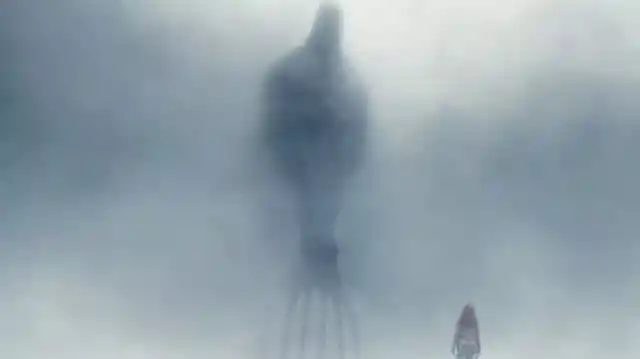
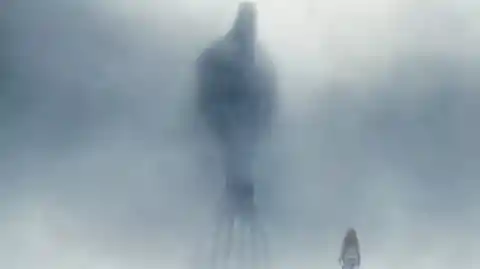
While they turn out to be nowhere near as monstrous as their appearance suggests, Arrival’s towering aliens certainly present an impressive visual spectacle. Special mention should also go towards the film's awe-inspiring space ships, which were also entirely constructed using digital effects.
T-1000 – Terminator 2: Judgment Day (1991)
As well as being one of the best-loved action movies ever, 1991's Terminator 2: Judgment Day also holds a place in film history for its special effects. Having scratched the surface of what CGI could do in his previous film The Abyss, writer-director James Cameron used this technology to realise the Terminator sequel's iconic villian.
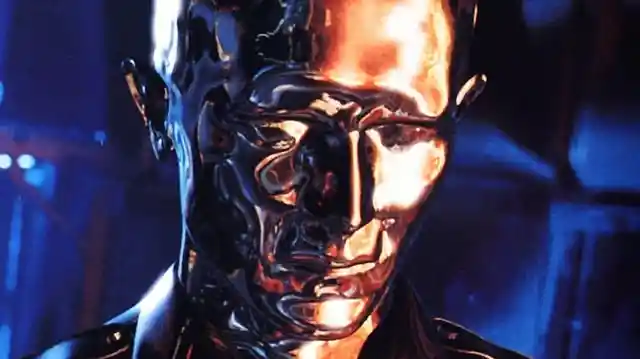
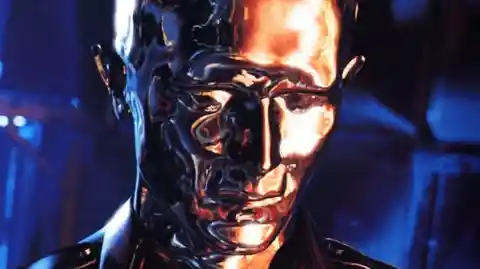
The T-1000 is an advanced Terminator cyborg made of liquid metal which allows it to shapeshift and produce deadly blades out of its own body. While much of the character's menace is down to Robert Patrick's chilling performance, the groundbreaking morphing FX were unlike anything audiences had seen up to that point.
Spinosaurus – Jurassic Park III (2001)
While the original Jurassic Park is considered a classic and the more recent Jurassic World movies have made a splash, 2001's Jurassic Park III tends to be overlooked. This is a shame, as director Joe Johnston's comparatively understated sequel packs in some thrilling sights - not least of which is the spinosaurus.
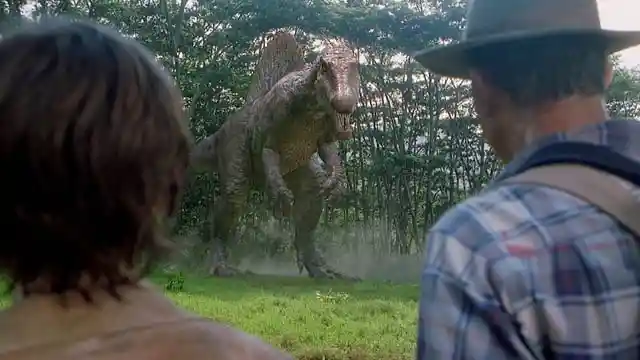
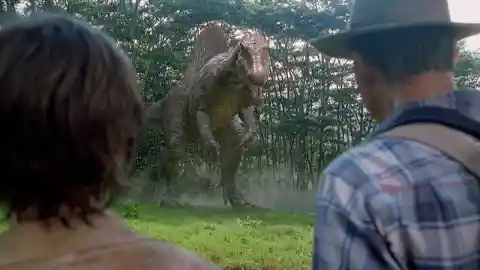
Sequels always have a 'go big or go home' mindset, and the spinosaurus fits the bill perfectly; it's bigger, faster and fiercer than any of the park’s other creations, a point it capably proves by brutally slaying the T-Rex (much to the displeasure of some diehard Jurassic Park fans).
Fell Beasts – The Lord of the Rings: The Return of the King (2003)
The nightmarish winged Fell-Beasts ridden by the Nazgûl are among the most horrifying creatures in the entire Lord of the Rings franchise. Also referred to as hell-hawks and Nazgûl-birds, these flying horrors are piloted by the Ring Wraiths in the War of the Ring.
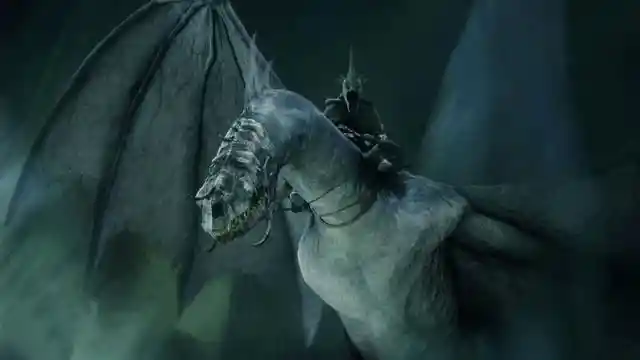
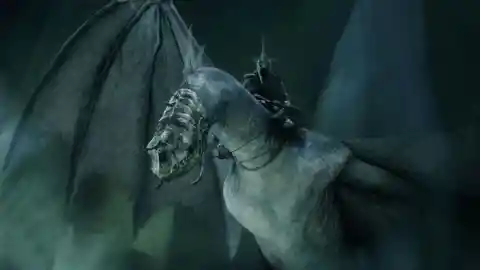
While a couple of close-up shots of the Fell Beasts haven’t aged particularly well, the sequences of them soaring through the skies still look excellent. Weta Digital had already proven their expertise in digital animation via the impressive monsters of the previous LOTR films; this was simply another feather in their cap.
Predator – Prey (2022)
Much like Alien, the original Predator movie used exceptional practical effects, makeup and prosthetics to create a genuinely terrifying monster. Unusually, the Predator's subsequent appearances have tended to lean most heavily on practical FX, but 2022 prequel Prey added some digital trickery to impressive effect.
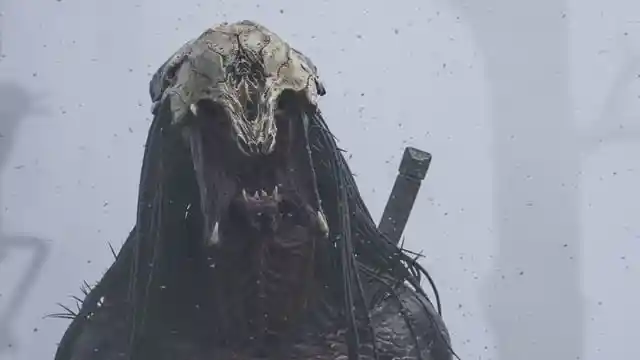
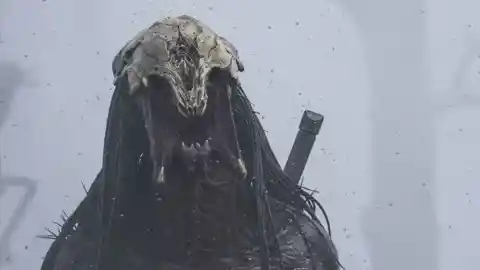
Actor and former basketball player Dane DiLiegro portrayed the Predator live on set in costume, but mo-cap elements were used to add subtle details to the alien hunter in post-production, making its appearance even more unworldly and hideous. Digital FX also made the Predator's ability to turn invisible more realistic than in previous films.
Shere Khan – The Jungle Book (2016)
Director Jon Favreau's 2016 version of The Jungle Book is a tricky one to classify. While it has been called a live action remake, in fact virtually everything in the film aside from Mowgli actor Neel Sethi was created digitally in post-production, with the vast majority of the movie shot in an empty warehouse.
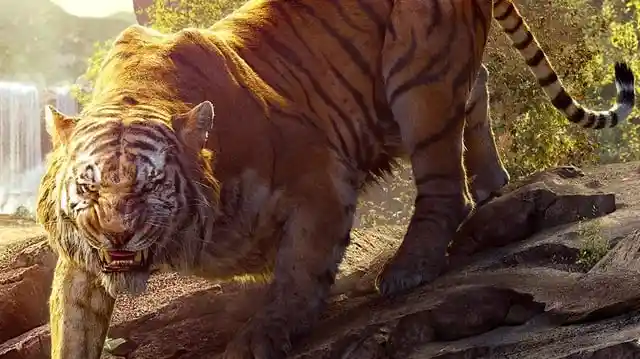
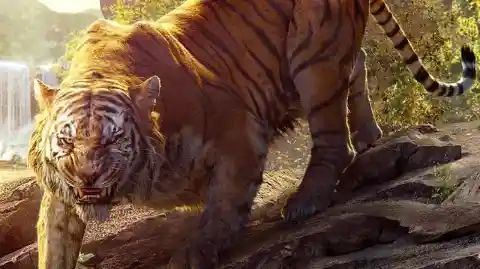
Taking full advantage of modern advances in CGI (not to mention an eye-popping $175 million budget), 2016's The Jungle Book presents scores of talking animals which are almost indistinguishable from the real thing. Naturally, the scariest of the lot is the villainous tiger Shere Khan, thanks to both the photorealistic FX and Idris Elba's performance.
Carnage – Venom: Let There Be Carnage (2021)
Thanks to his work in The Lord of the Rings, King Kong and the Planet of the Apes series, actor Andy Serkis is pretty much synonymous with mo-cap CGI, so it's small wonder he was enlisted to use that expertise behind the camera on dark superhero sequel Venom: Let There Be Carnage.
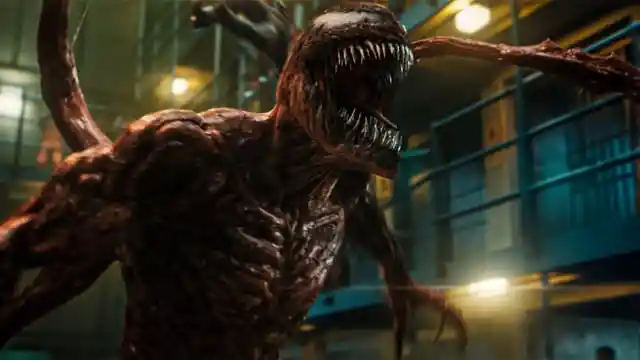
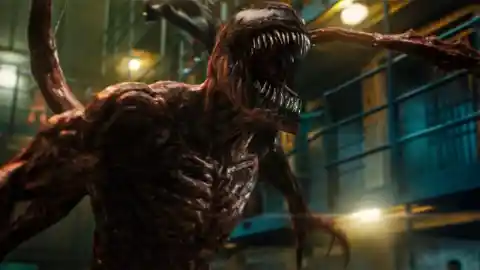
While Carnage isn’t the first Symbiote to appear onscreen, he’s arguably the most impressive. What he lacks in bulk he makes up for in raw, chaotic viciousness, moving at lightning-fast speeds as tendrils of flesh shoot out of his body. Whenever Carnage is on screen the results are, well, carnage.
Elephants – King Arthur: Legend of the Sword (2017)
2017's King Arthur: Legend of the Sword proved to be an epic folly for studio Warner Bros and director Guy Ritchie. Intended to kick-start a franchise, it proved a massive flop that lost around $180 million. Still, at least some of that money shows up on screen - especially with its giant CGI elephants.
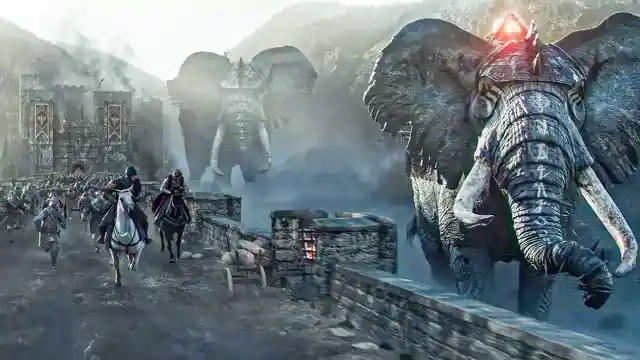
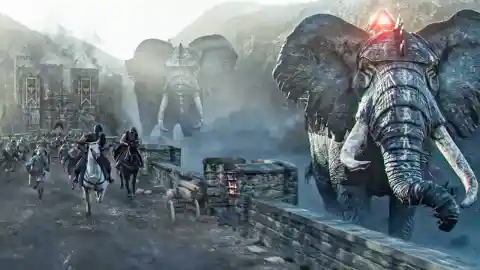
It’s impossible to avoid making comparisons between Legend of the Sword's 300-foot elephants and the Mumakil from the third Lord of the Rings movie. At least in terms of CGI, the elephants arguably come out on top, with the animation holding up equally well in long shots as well as closeups.
Harvester Robot – Terminator Salvation (2009)
The Terminator franchise might have become an exercise in increasingly soulless cash-grabs, but at least it delivers a constant stream of ever-scarier CGI death-bots. 2009's fourth instalment Terminator Salvation offered the thrilling prospect of showing the war between Skynet and John Connor's human rebels, and while it fell short, some of its CGI creations worked.
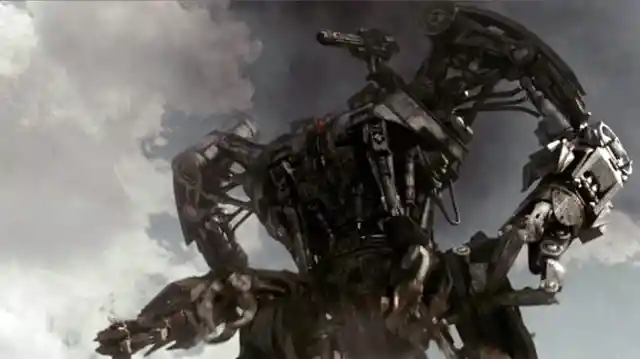
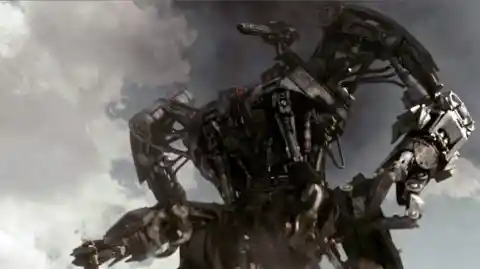
Surely the most impressive and intimidating new robots introduced in the 2009 film (starring Christian Bale and Sam Worthington) are the Harvesters. As the name suggests, these mechanical monsters plow through humans like wheat, tirelessly hunting down and exterminating any unfortunate people it finds.
Dr. Caine – Hollow Man (2000)
One of the darkest and most hi-tech big screen takes on invisibility, director Paul Verhoeven's 2000 film Hollow Man casts Kevin Bacon as a scientist who tests an invisibility serum on himself, but is soon driven insane by the experiment. The film made use of then-cutting edge techniques to present its invisible maniac.
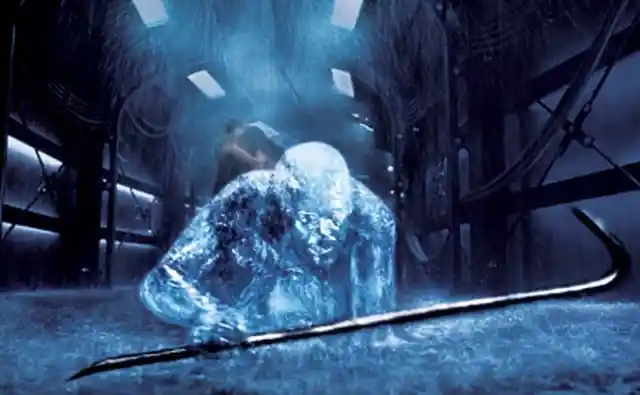
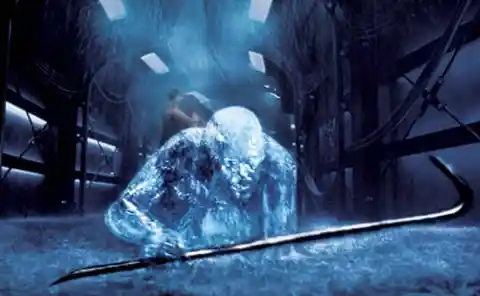
The scene in which Caine undergoes the experimental procedure to make himself invisible displays some phenomenal VFX as the mad scientist’s skin, muscles, bones and organs sequentially vanish. Even outside of this scene, Bacon was almost always on set in a green screen suit, his shape only made visible by water, steam etc.
Mimics – Edge of Tomorrow (2014)
Director Doug Liman's 2014 sci-fi war movie Edge of Tomorrow is most notable for seeing leading man Tom Cruise die and be reborn over and over again, as his future solider gets caught in a Groundhog Day-esque time loop. The film also boasts some very impressive and unique alien antagonists in the Mimics.
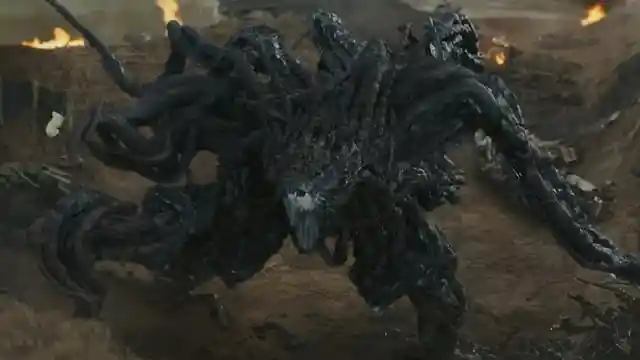
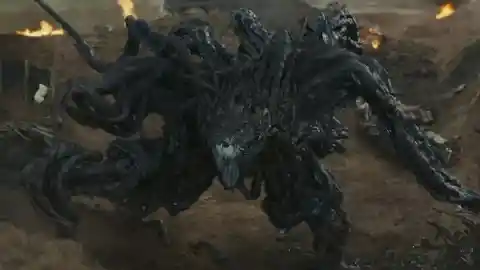
A race of horrifying aliens on a crusade to conquer the galaxy, the Mimics provide an example of an onscreen monster that simply wouldn’t have been possible before the invention of CGI. Giant creatures with prehensile strands of sinew protruding from their bodies, the Mimics shown in the movie were created entirely with visual effects.
Azog – The Hobbit: An Unexpected Journey (2012)
It's fair to say that The Hobbit trilogy did not go over quite as well with audiences as the original Lord of the Rings movies. Director Peter Jackson was roundly criticized for his over-reliance on VFX in 2012’s The Hobbit: An Unexpected Journey and its sequels, but the franchise did produce some impressive CGI spectacles.
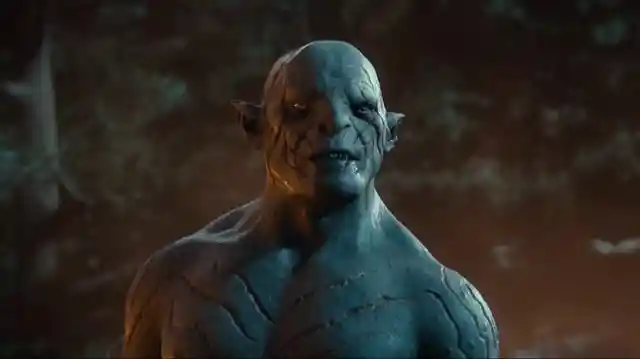
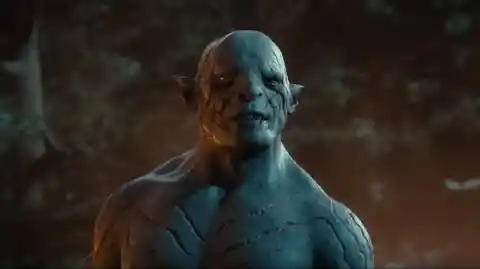
While Smaug’s animation was admittedly lackluster, the movie’s secondary villain – Azog the Defiler – was much more convincing. Manu Bennett portrayed the fearsome orc live on set, and Weta Digital brought him to life in post-production. He's basically Gollum on steroids.
Driller – Transformers: Dark of the Moon (2011)
Director Michael Bay is notorious for always making everything bigger, louder and faster, which made him the ideal candidate to bring toy/cartoon franchise Transformers to the big screen. The movies delivered a metric ton of digital carnage, and some of the most impressive is in third instalment Transformers: Dark of the Moon.
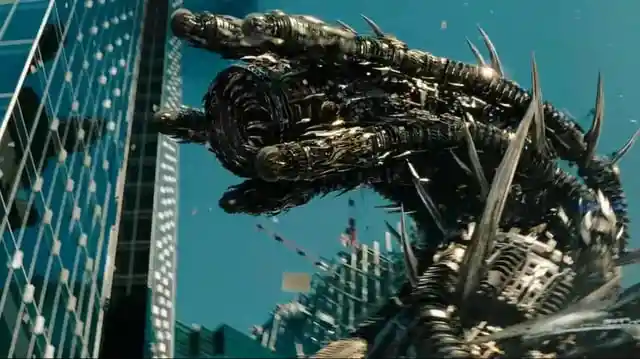
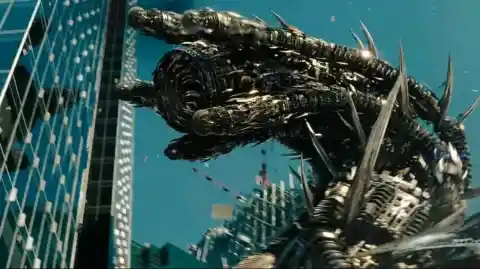
While Optimus Prime and his fellow Autobots are brilliantly rendered, the evil Decepticons tend to have the more visually interesting designs, particularly Driller. As the name suggests, Driller does a fair bit of drilling in the movie, causing a whole lot of photorealistic property damage along the way.
Queen Sand-Gobbler – Love and Monsters (2020)
Originally intended for theatrical release, 2020's Love and Monsters - a coming of age adventure set in a world overrun by giant monsters - wound up going direct to streaming in most territories due to Covid-19. Happily, the power of the film's digital creations was not diminished on the small screen.
While any of the of monsters encountered by the movie’s protagonists could justifiably be included here, the hideous Queen Sand-Gobbler - essentially a very big, very fast and very nasty worm - surely takes the crown as the most blood-curdling creature in director Michael Matthews' film.
The fox – Antichrist (2009)
Danish writer-director Lars von Trier is by no means a figure synonymous with CGI-driven spectacle. The fiercely independent filmmaker is notorious for his uncompromising, hard-edged visions, and his surreal 2009 horror Antichrist is a prime example of this. Nonetheless, the film does boast some chilling and impressive use of digital FX.
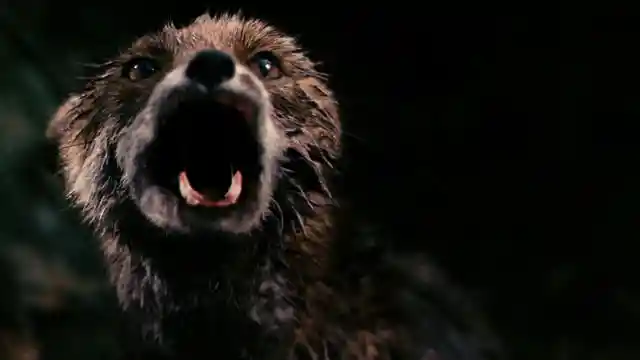
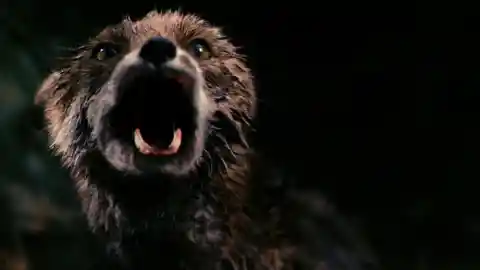
While not a monster in the traditional sense of the word, the fox in Antichrist is still deeply unsettling. Fabricated 100% digitally the fox delivers a single, chilling line: “chaos reigns.” If the CGI hadn’t been so eerily realistic, the moment probably would have elicited laughs; instead, it elicits shudders.
Graboids – Tremors: A Cold Day in Hell (2018)
A comedy-horror masterpiece, 1990’s Tremors centers on the Graboids; gargantuan, carnivorous monsters that live under the ground and prey on humans. The original relies almost entirely on practical effects to create its subterranean monsters, but its subsequent series of direct-to-video sequels have leaned more heavily on CGI.
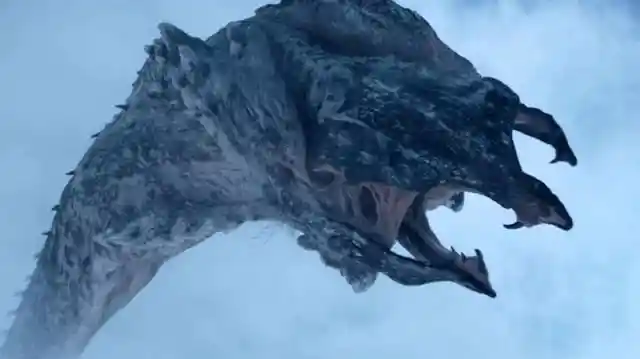
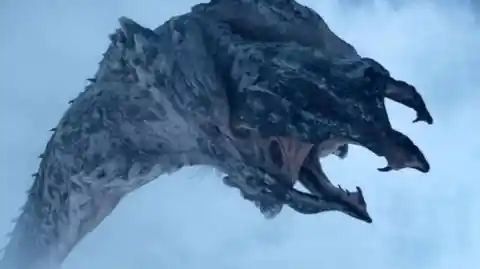
While the six Tremors sequels are unsurprisingly inferior to the original, they do benefit from advances in digital FX, particularly on the more recent entries. 2018's Tremors: A Cold Day In Hell delivers all-digital Graboids that are probably scarier than any other incarnation of the creature to come before.
The Shark – Deep Blue Sea (1999)
These days, there are an alarming number of low-budget shark movies which bring the famous sea-dwelling creatures to life via usually very poor CGI. Happily, this wasn't the case for 1999's Deep Blue Sea, which presents its formidable sharks with a combination of actual shark footage, animatronics and CGI.
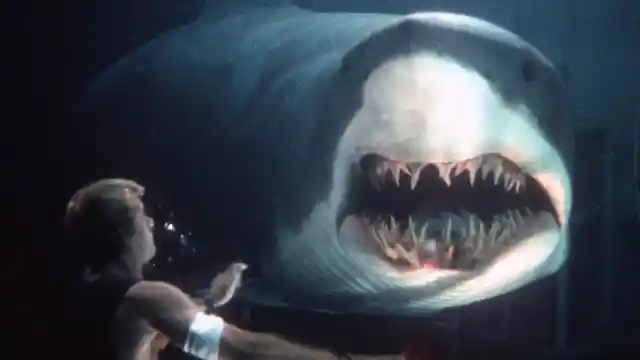
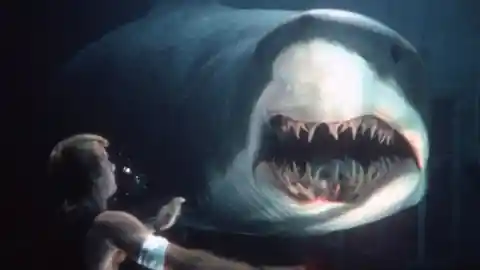
Admittedly, not all the CGI in Deep Blue Sea has aged that well: take the cartoonish yet unforgettable sequence in which Samuel L. Jackson is chowed down on while delivering a rousing speech. However, many shots are very impressive indeed, and leave you unable to distinguish the digital sharks from the real thing.
Cthulhu – Underwater (2020)
As the title might suggest, 2020 sci-fi horror Underwater takes place primarily under the waves, and sees a team of deep sea engineers accidentally uncover a gargantuan monster from the unknown depths. This beast was modelled on Cthulhu, the iconic cosmic entity created by legendary horror author H.P. Lovecraft.
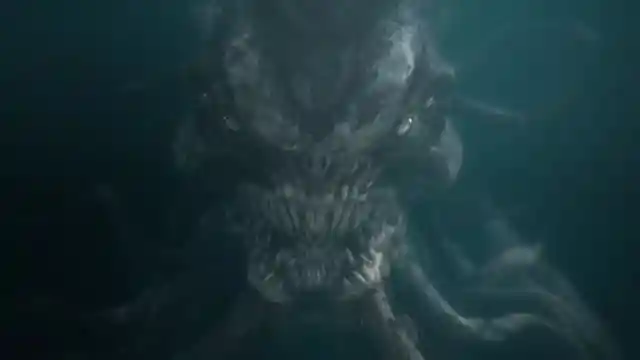
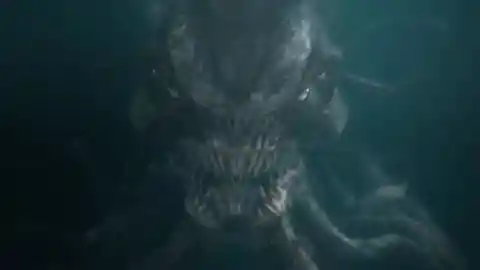
The Eldritch entities of H.P. Lovecraft’s horror stories are generally described as beyond human comprehension, which poses something of a problem when it comes to depicting them onscreen. While Underwater’s CGI Cthulhu isn’t quite incomprehensible, it’s certainly absolutely terrifying, and does a great job of instilling the sense of dread that pervades Lovecraft’s novels.
The robots – I, Robot (2004)
The very definition of uncanny, I, Robots’ humanoids are generally more creepy than outright terrifying. Director Alex Proyas film casts Will Smith as a technophobic future cop who believes a robot (Alan Tudyk in a mo-cap suit) has committed murder.
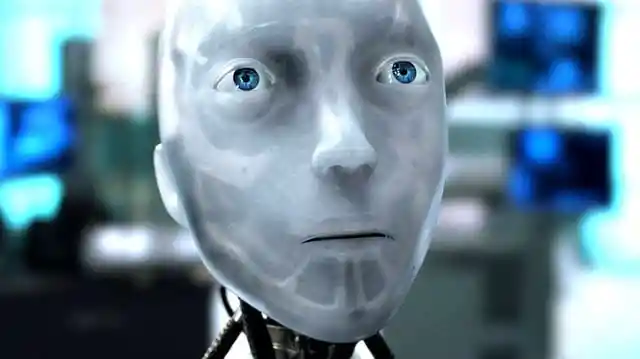
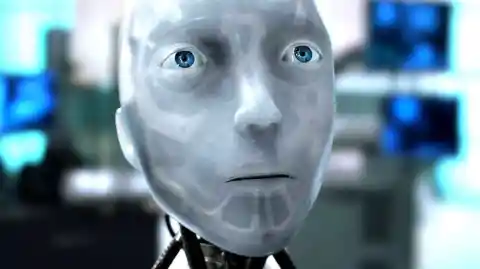
For the bulk of the film the robots appear innocuous enough, but this changes near the end as they turn murderous, suddenly adopting a sinister red glow and displaying genuine hatred on their eerily expressive faces. With their too-shiny look, the robots aren't exactly photorealistic today, but they broke new ground in 2004.
The aliens – Monsters (2010)
Before directing blockbusters Godzilla, Rogue One and The Creator, Gareth Edwards made his debut with 2010's Monsters. Made for a measly $500,000, the film benefits heavily from Edwards' background as a VFX artist, as he was able to include some awe-inspiring, extremely lifelike digital creations in the film.
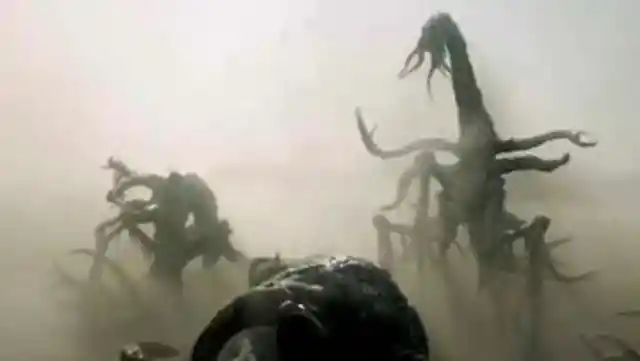
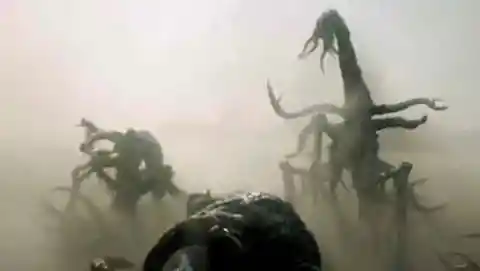
Naturally the lack of money means the giant extra-terrestrial creatures don't get too much screen time, but this makes it all the more striking when they do finally appear. While you never get to see them in their entirety, the towering, tentacled parts that you do see are enough to make your blood run cold.
The Creature – Colossal (2016)
Writer-director Nacho Vigalondo's Colossal boasts one of the oddest set-ups of any giant monster movie, as Anne Hathaway's struggling alcoholic suddenly discovers that a massive, Godzilla-esque creature has suddenly appeared in Seoul, and she is somehow in control of its destructive movements.
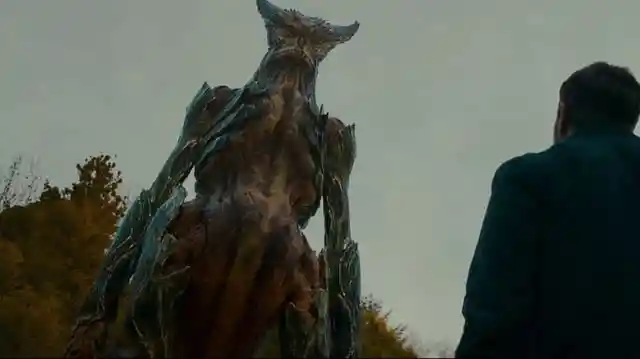
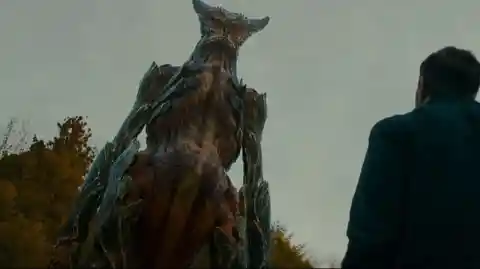
Like 2006’s Host – another monster flick set in Korea – Colossal regularly shows its towering, horned beast in broad daylight, which is notoriously challenging for animators. The mighty beast also has a very distinctive look, which became very important when the filmmakers were threatened with legal action by Toho, the studio that owns Godzilla.
Aliens – The Tomorrow War (2021)
Director Chris McKay (The Lego Batman Movie) made his live action debut with The Tomorrow War, an epic sci-fi which sees humankind at loggerheads with extra-terrestrial invaders. While it was widely considered a derivative take on existing alien invasion movie tropes, at least the aliens themselves were pretty impressive.
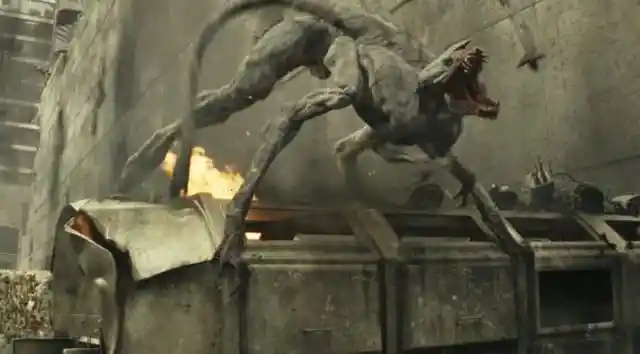
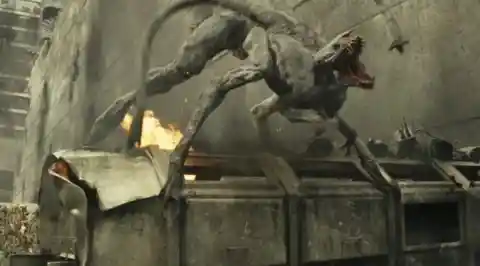
Unlike the technologically advanced aliens of movies like The War of the Worlds, The Tomorrow War’s invaders are vicious, feral and horrifyingly animalistic, literally eating their way through whatever crosses their path. The film's VFX team reportedly took inspiration from The Matrix's sentinels and the Tripods of The War of the Worlds.
Cave Troll – The Lord of the Rings: The Fellowship of the Ring (2001)
As we've established, Peter Jackson's The Lord of the Rings trilogy boasts no shortage of impressive digitally-rendered monstrosities. One of the most impressive shows up during one of the most tense moments of first film The Fellowship of the Ring, when our heroes battle orcs in the mines of Moria.
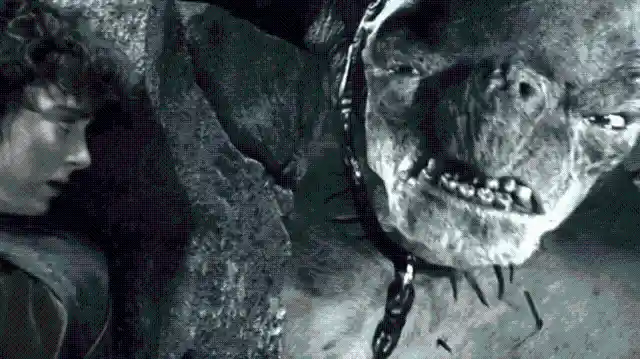
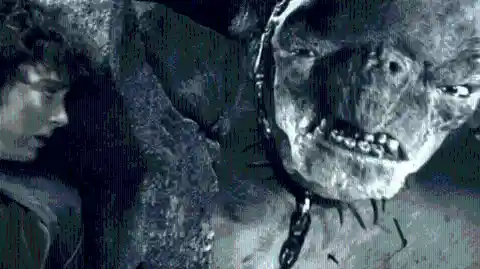
Boromir’s exclamation of “they have a cave troll” immediately gets the audience wondering what the dreaded creature will look like, and it doesn’t disappoint. A hulking mass of pale flesh, the cave troll’s lumbering movements are rendered to spectacular effect in CGI that looks still looks remarkably impressive over two decades after the film’s release.